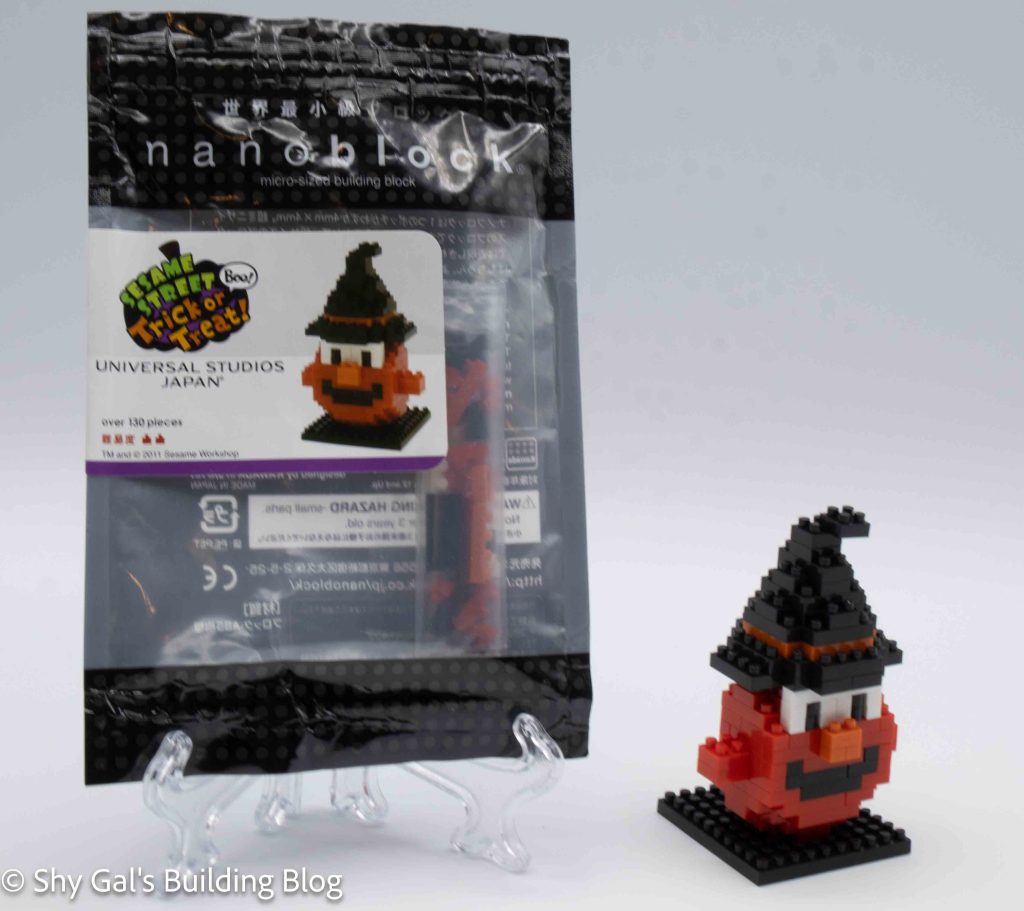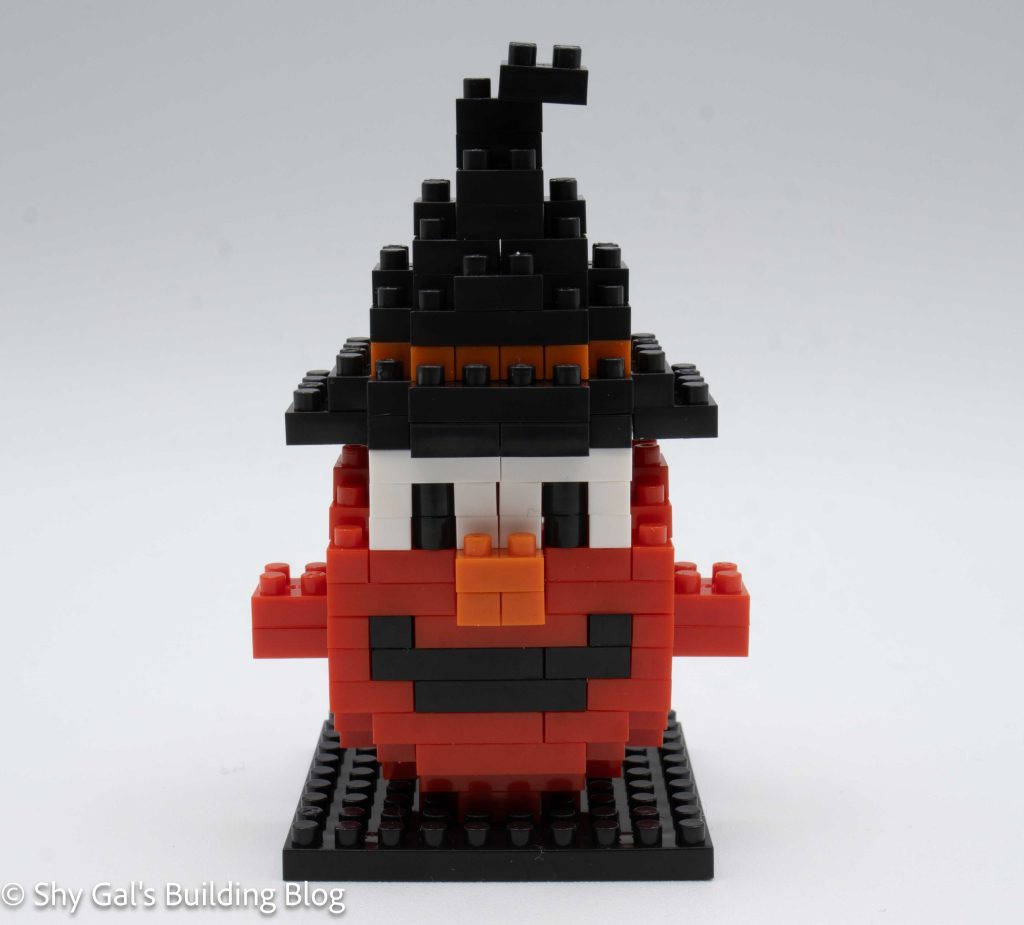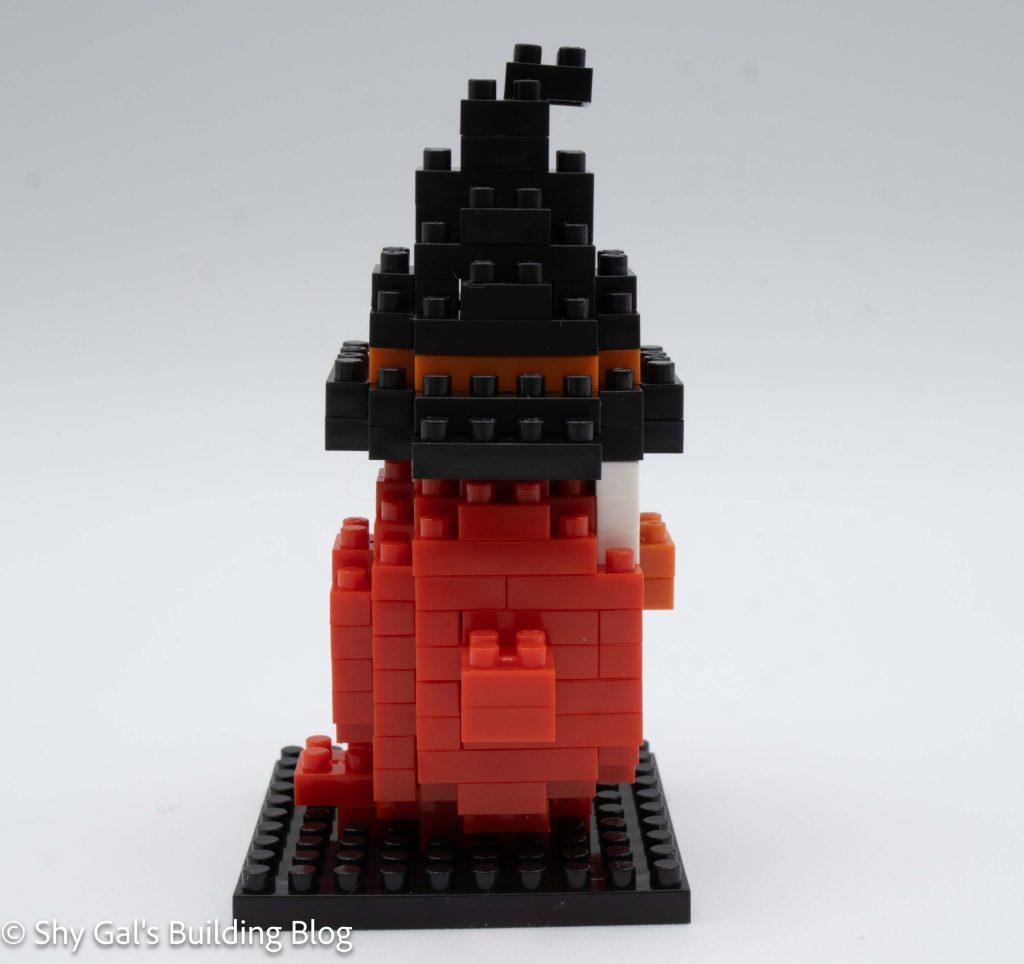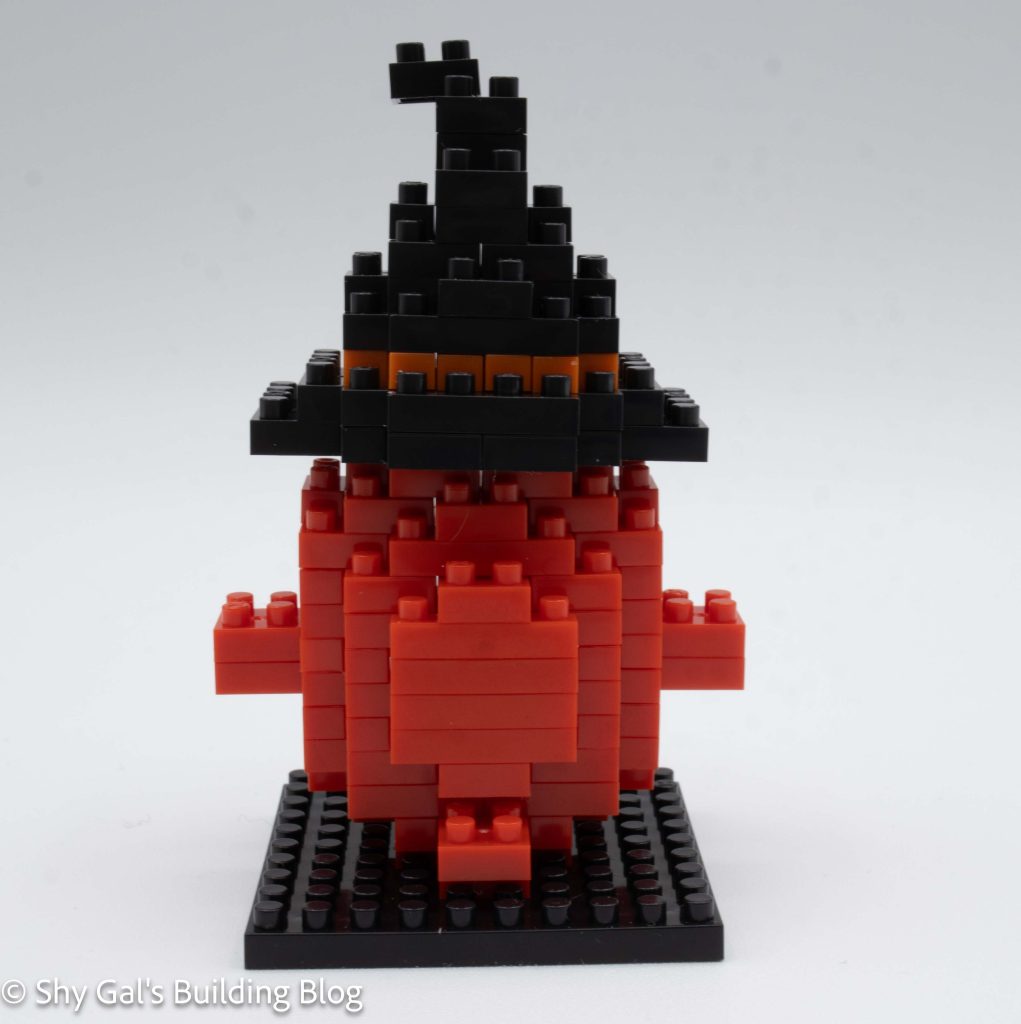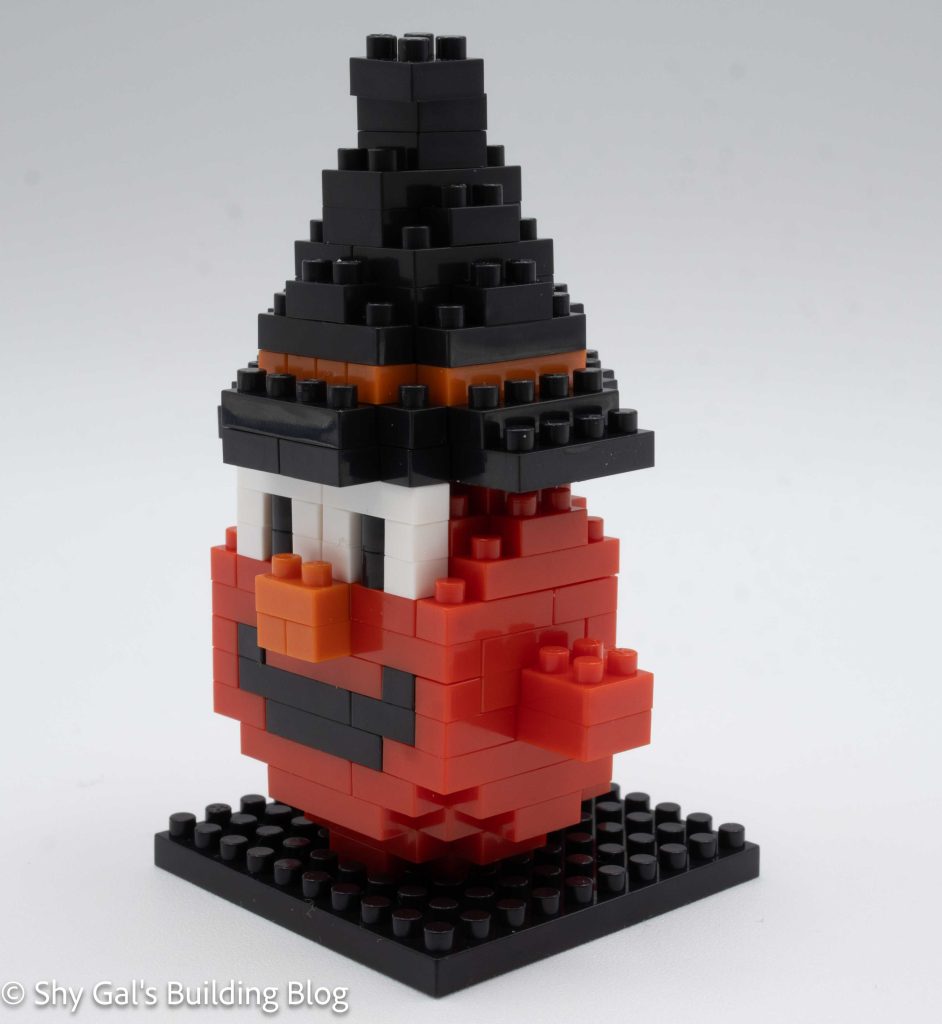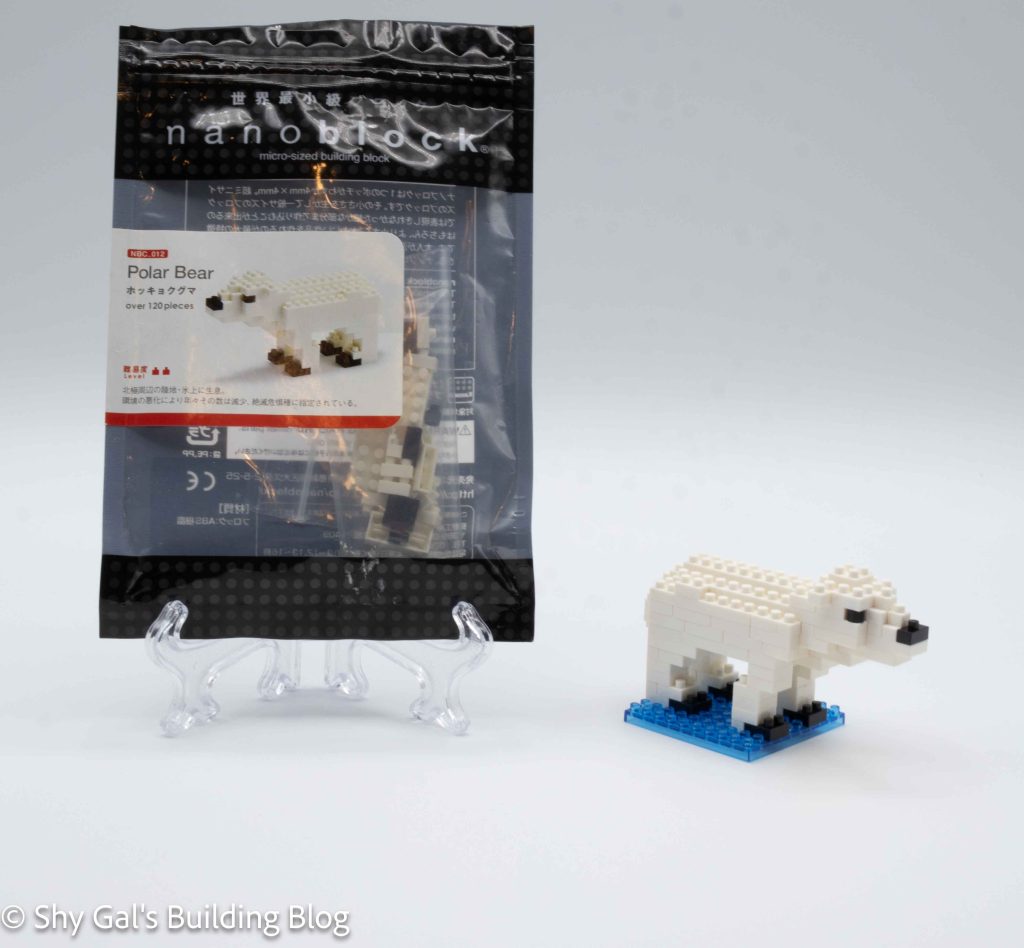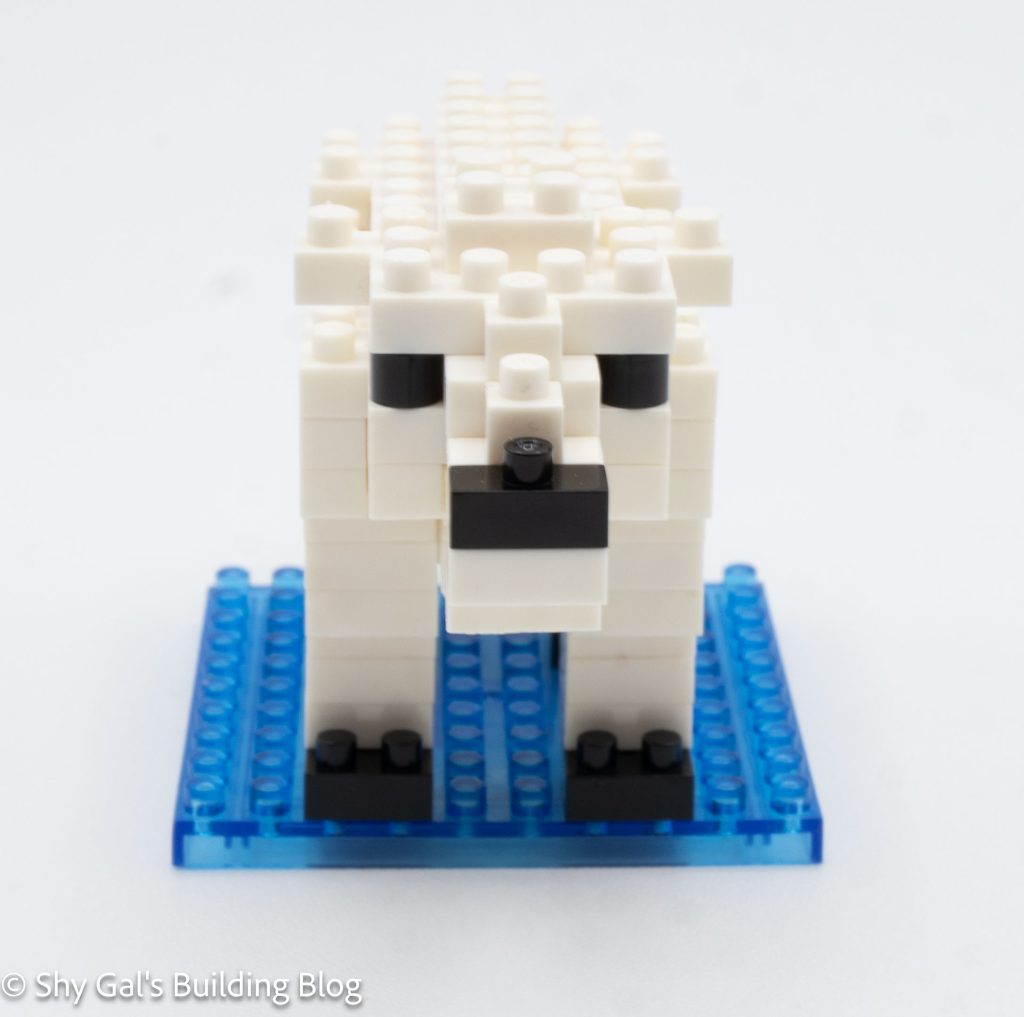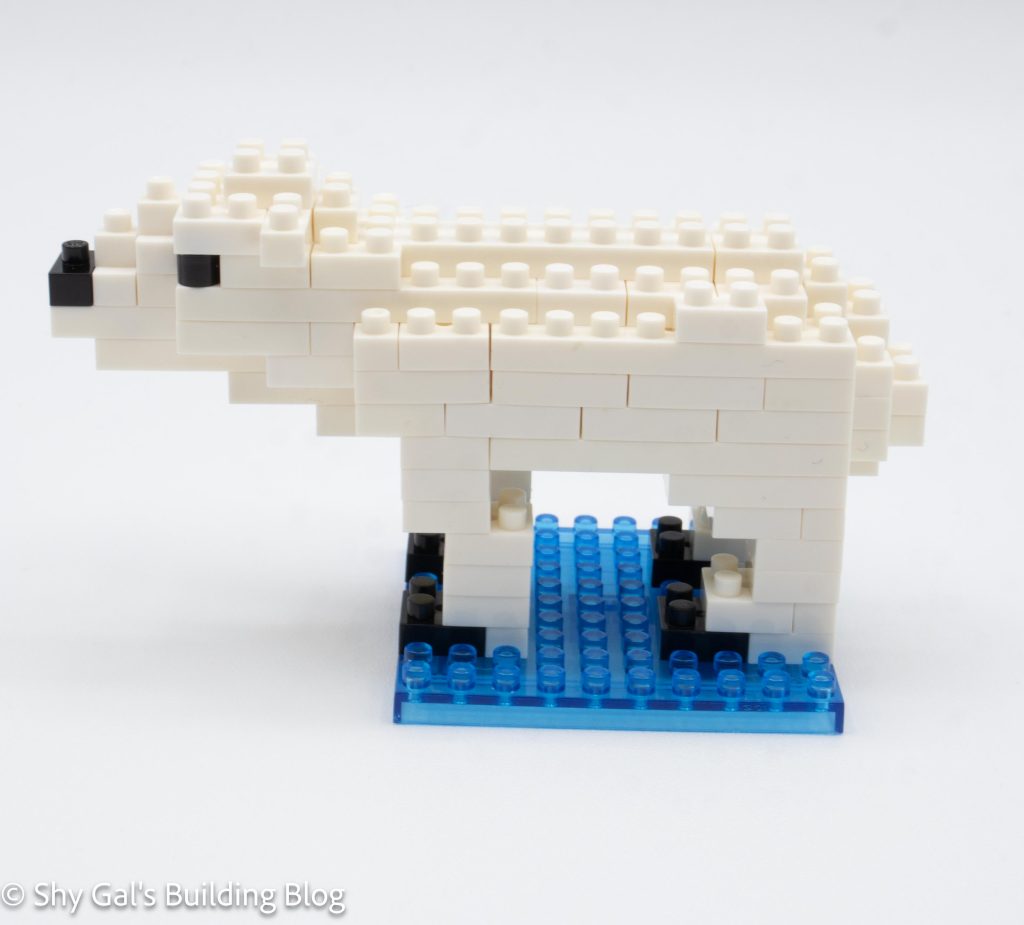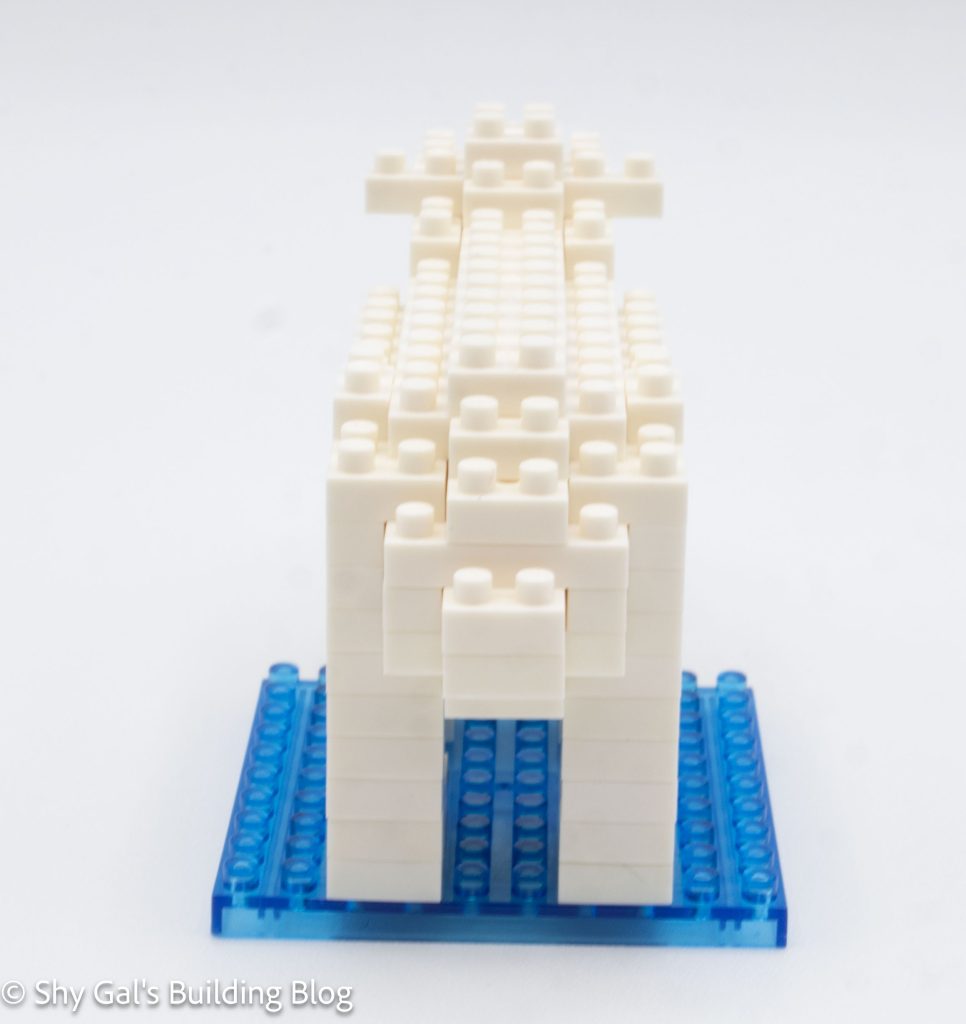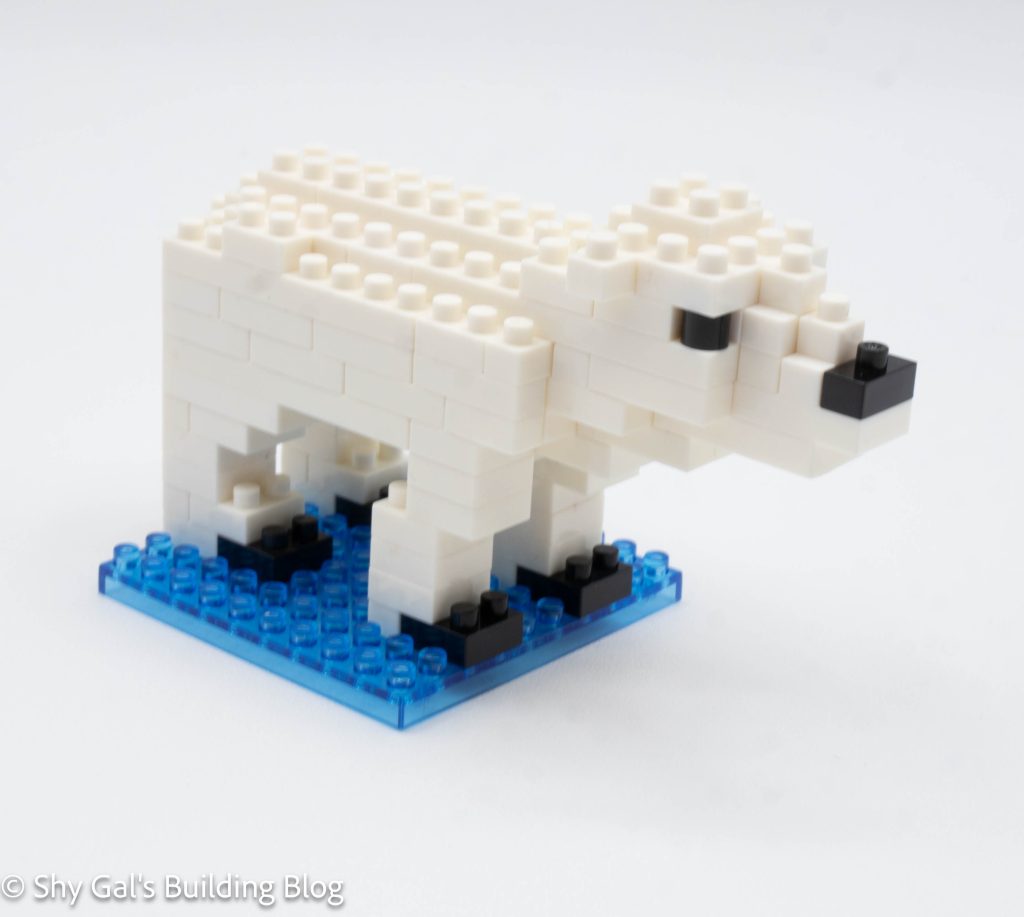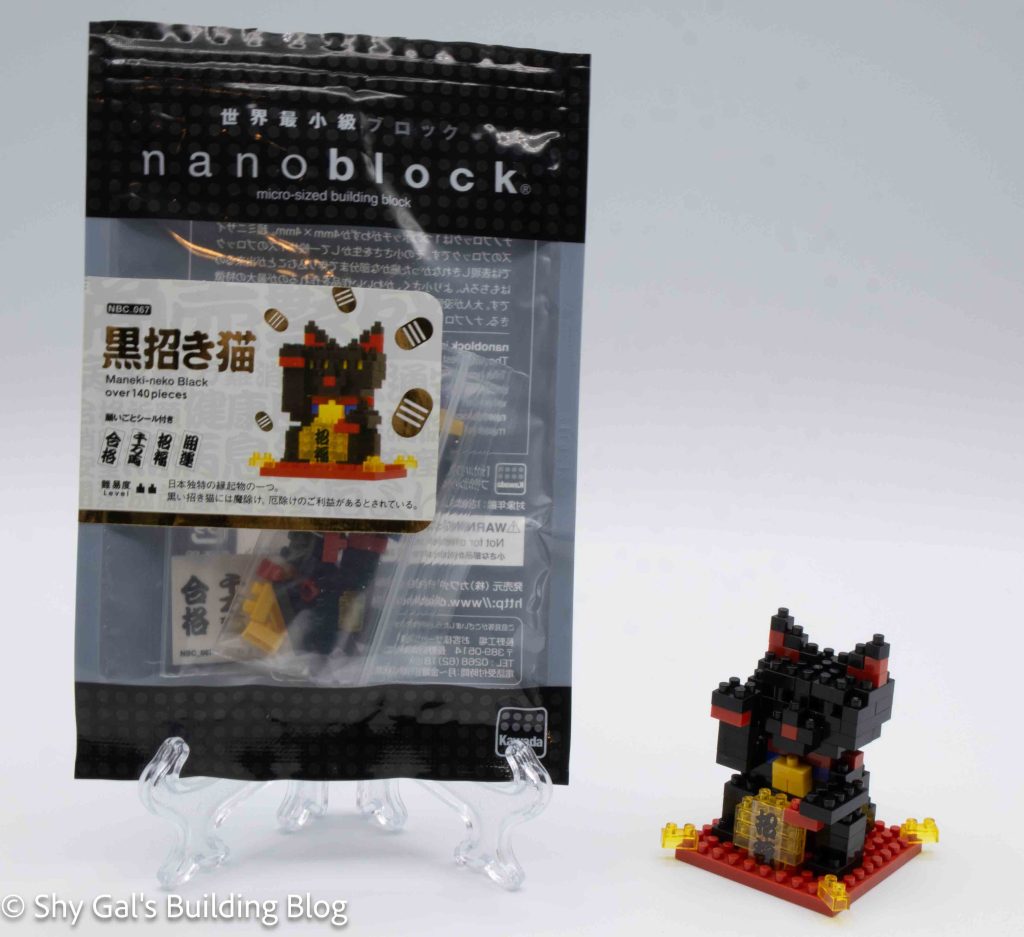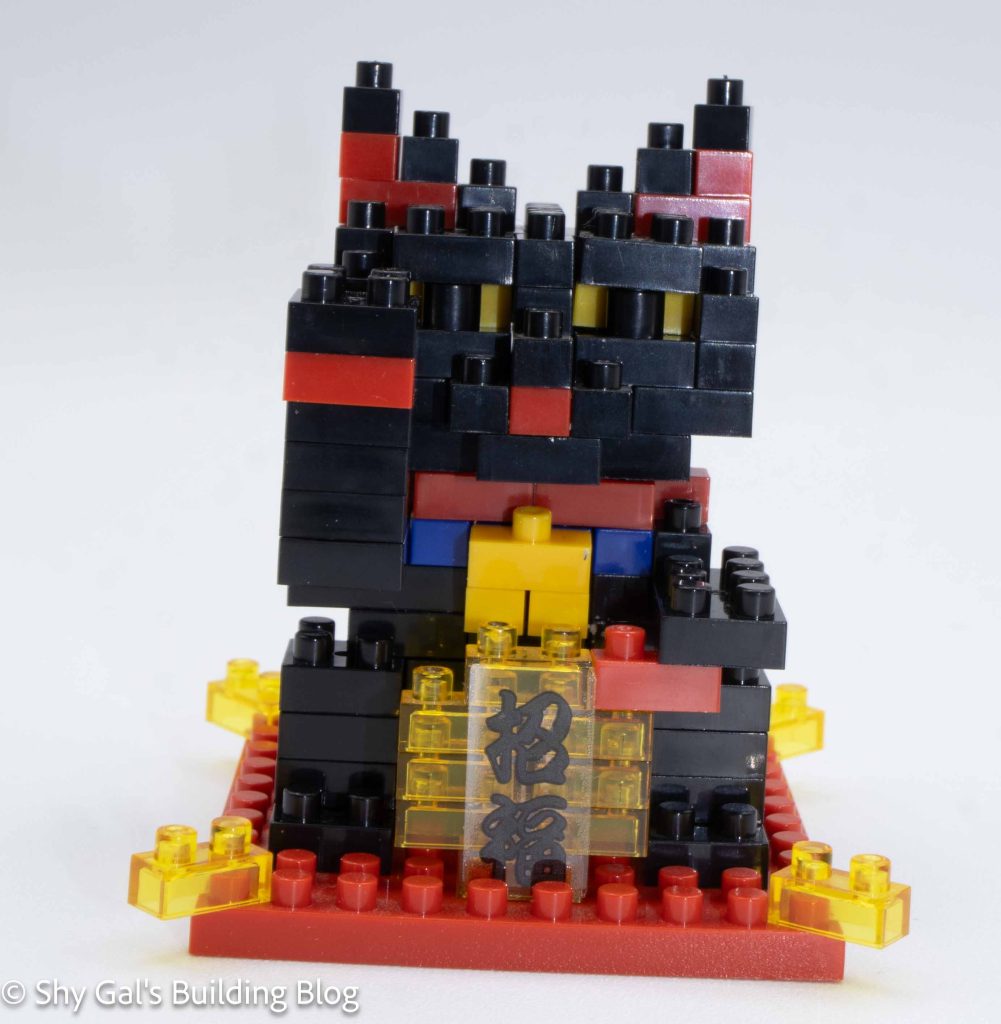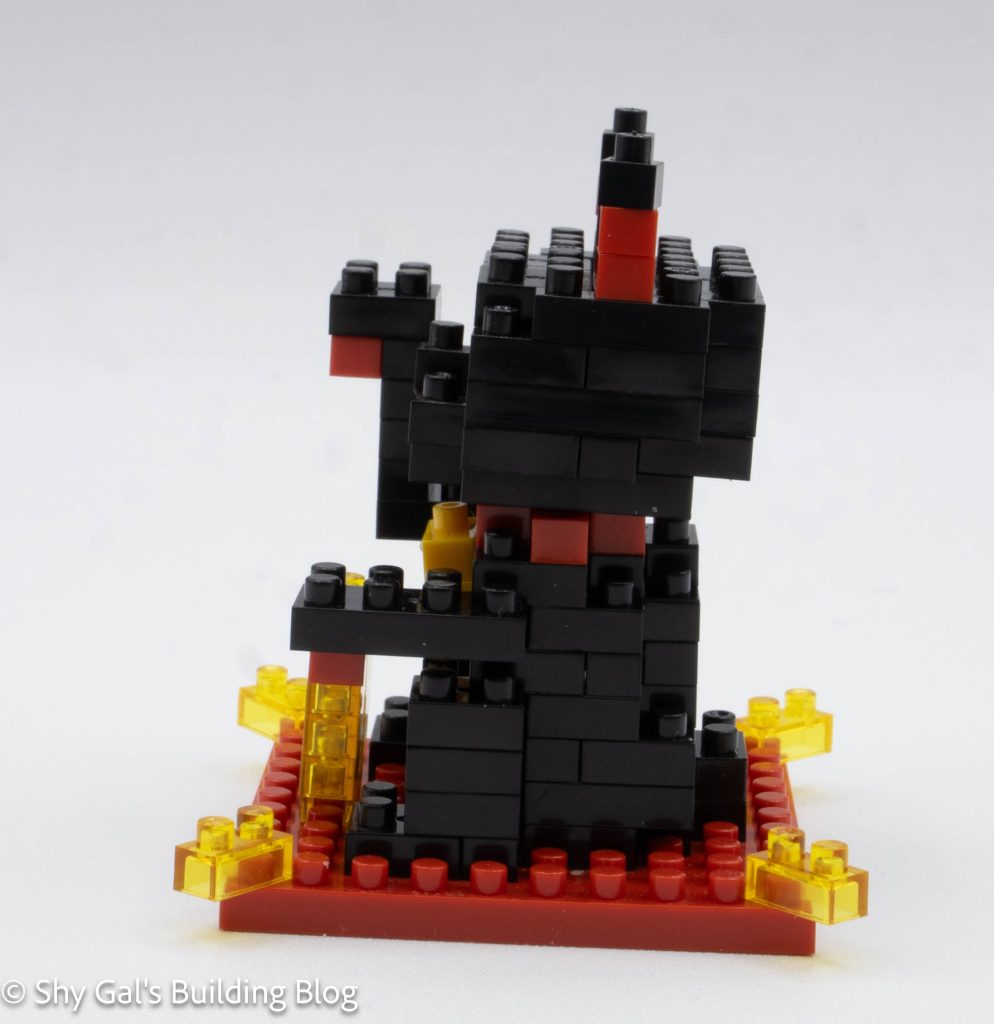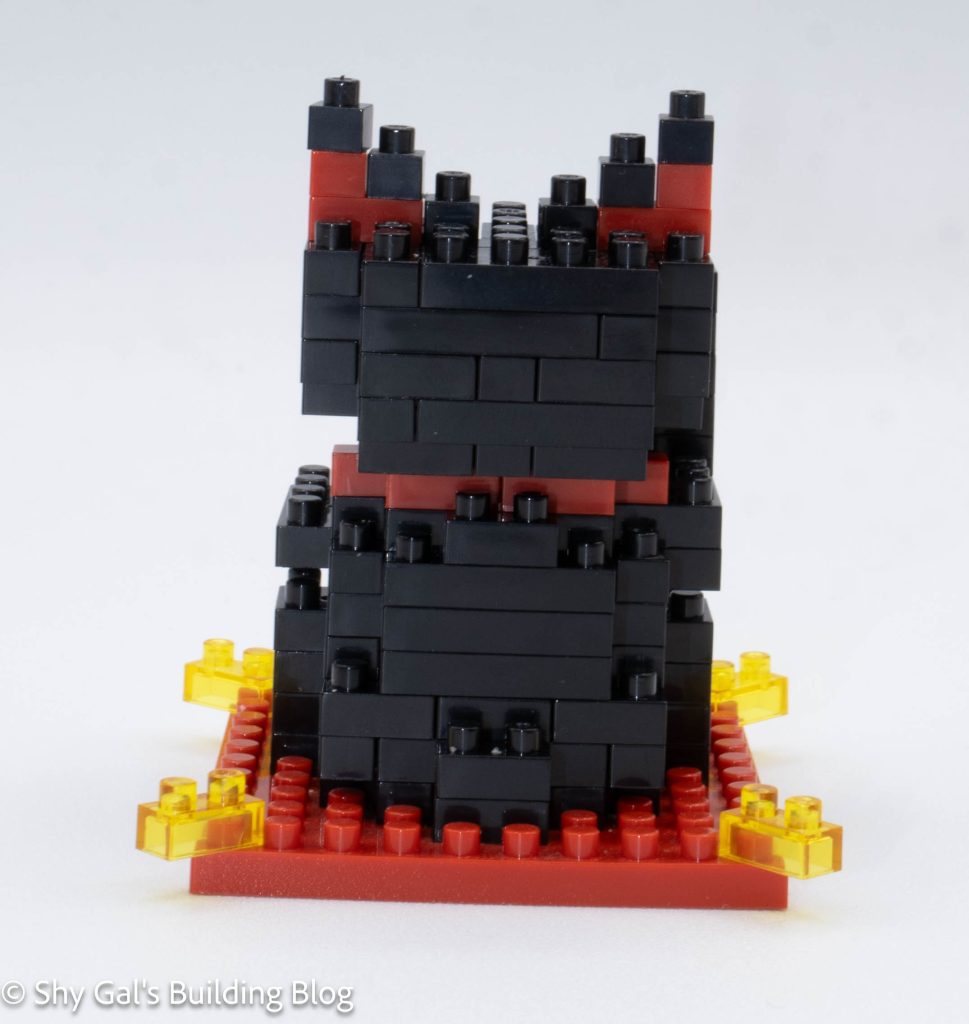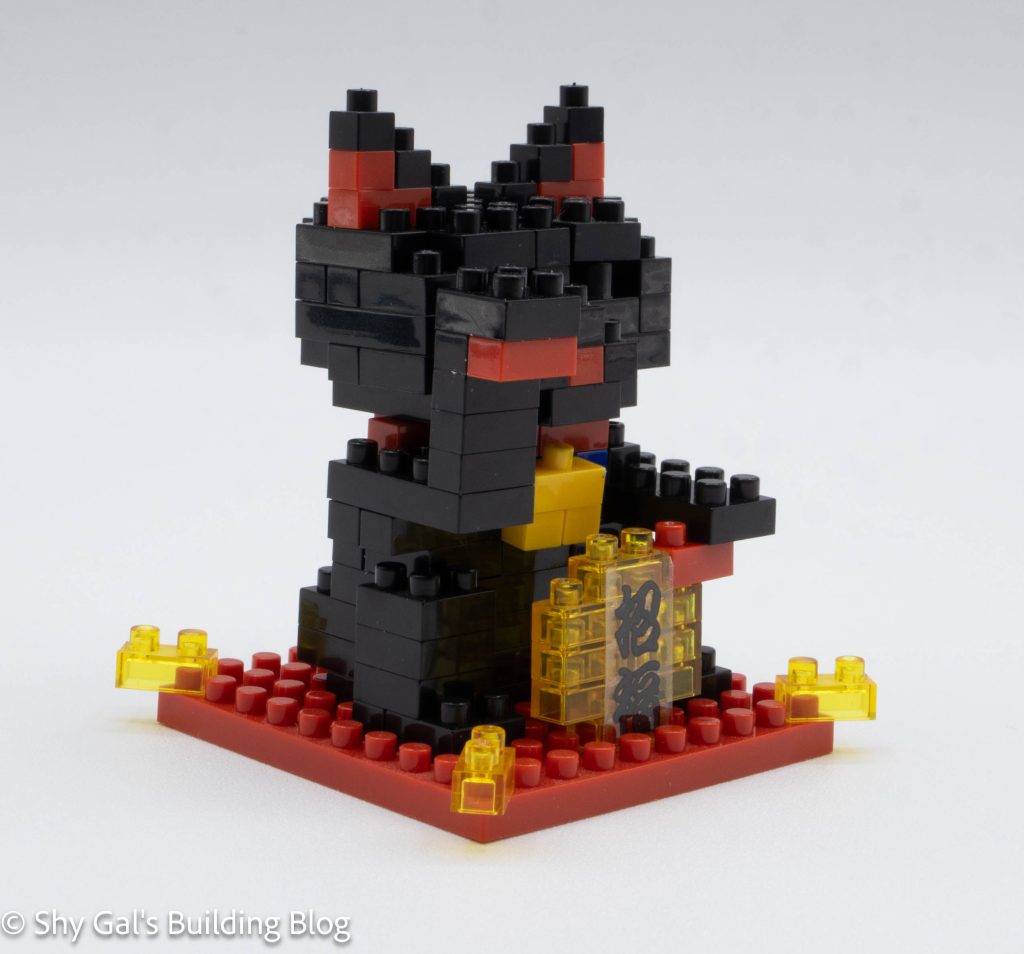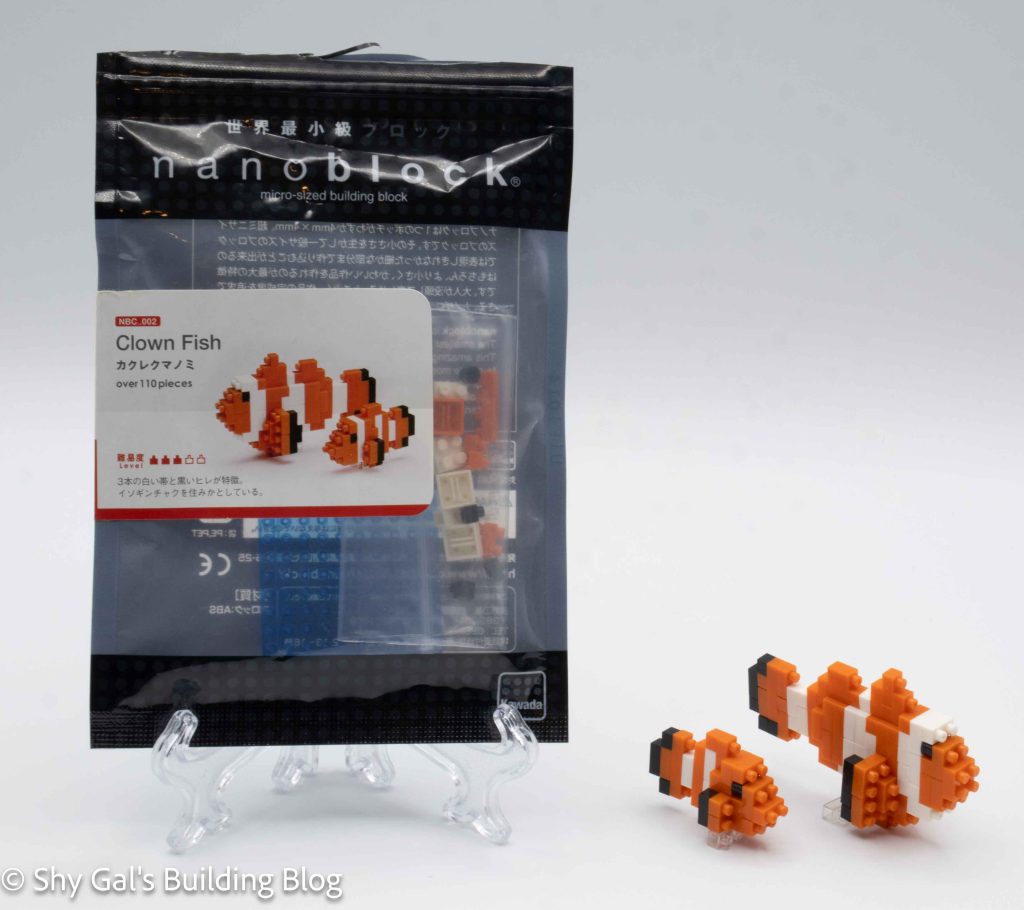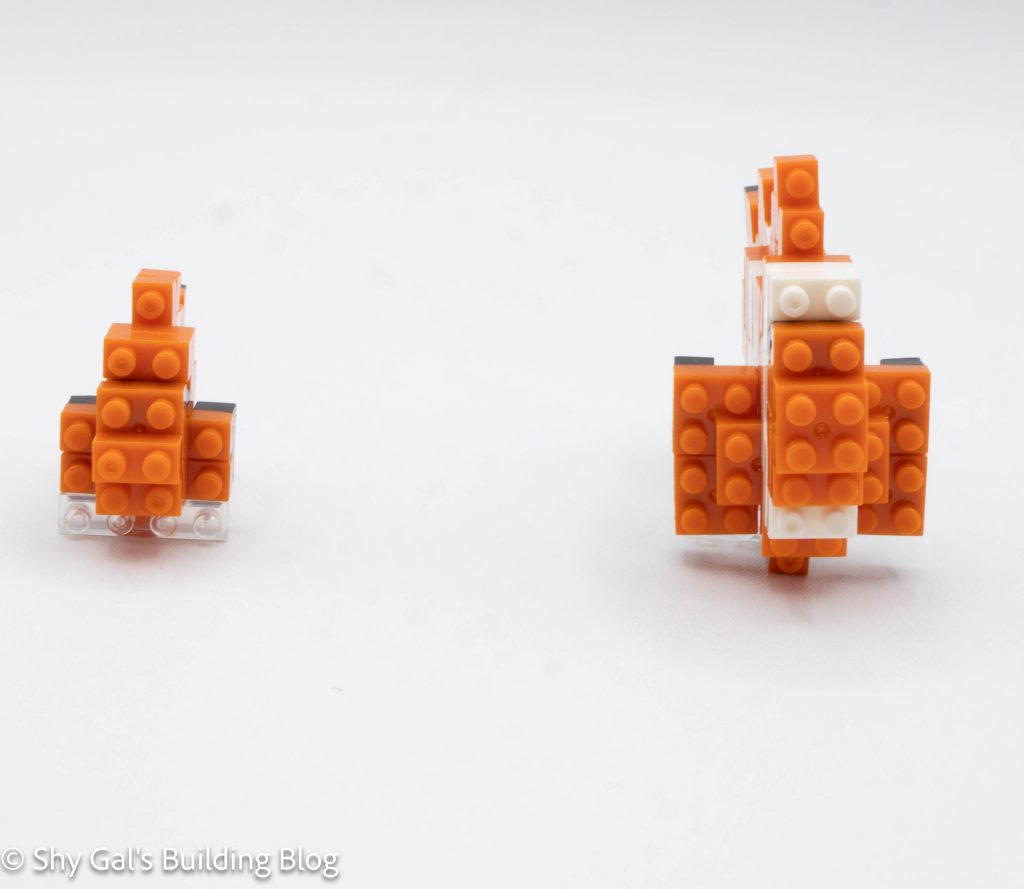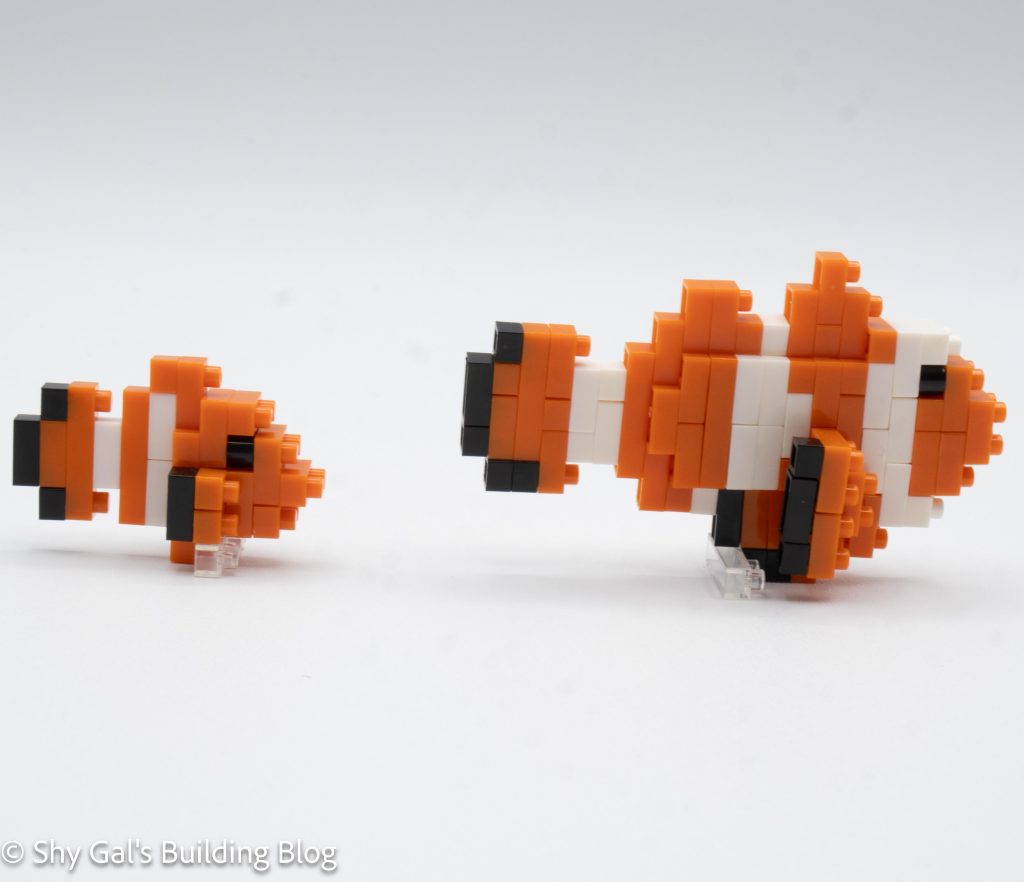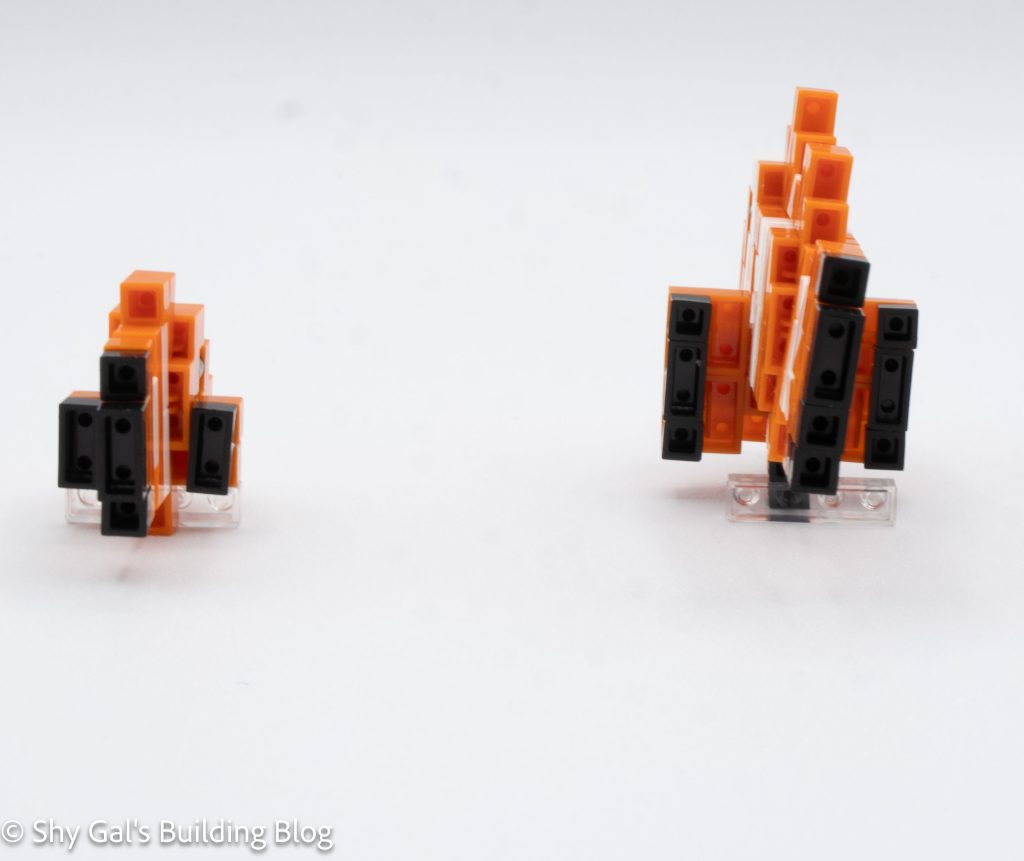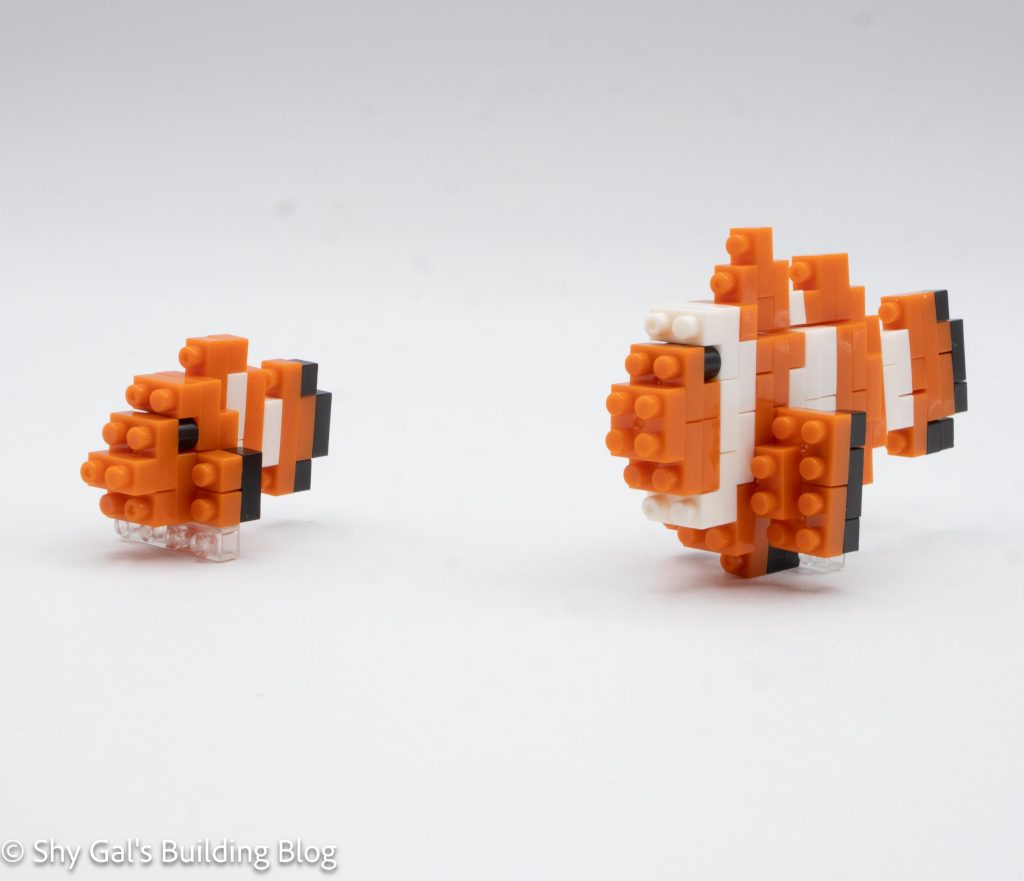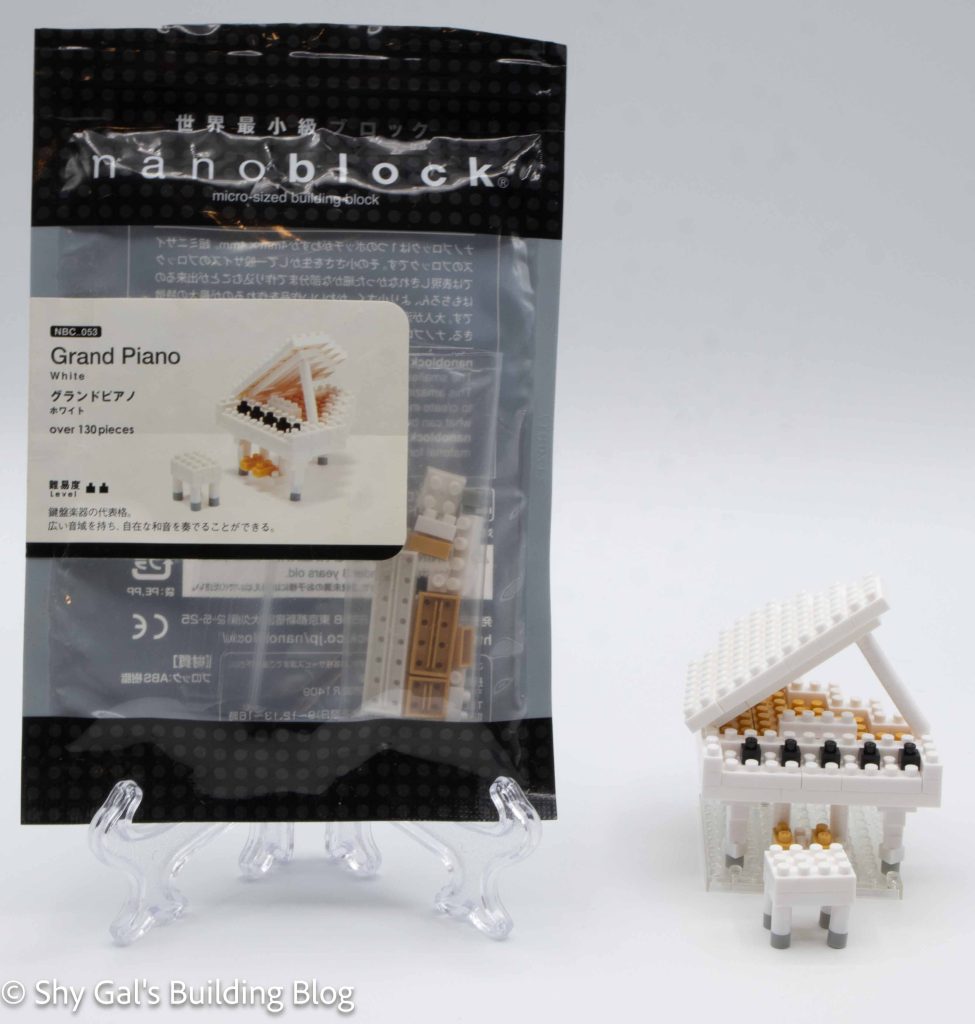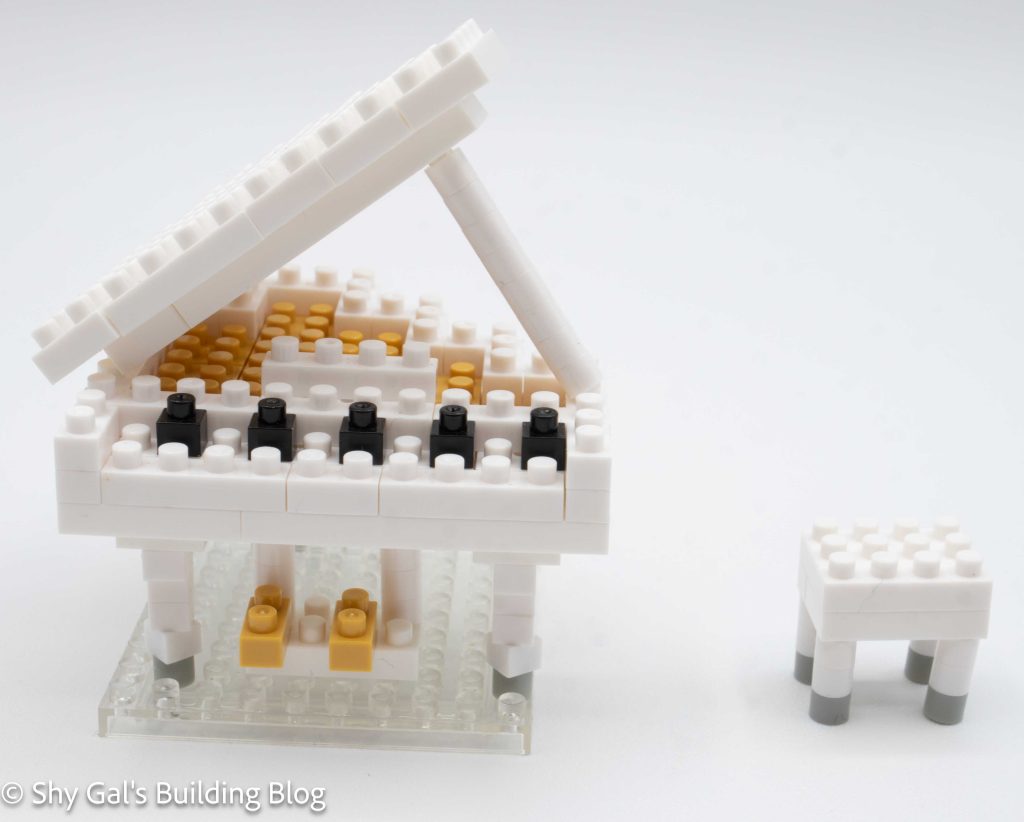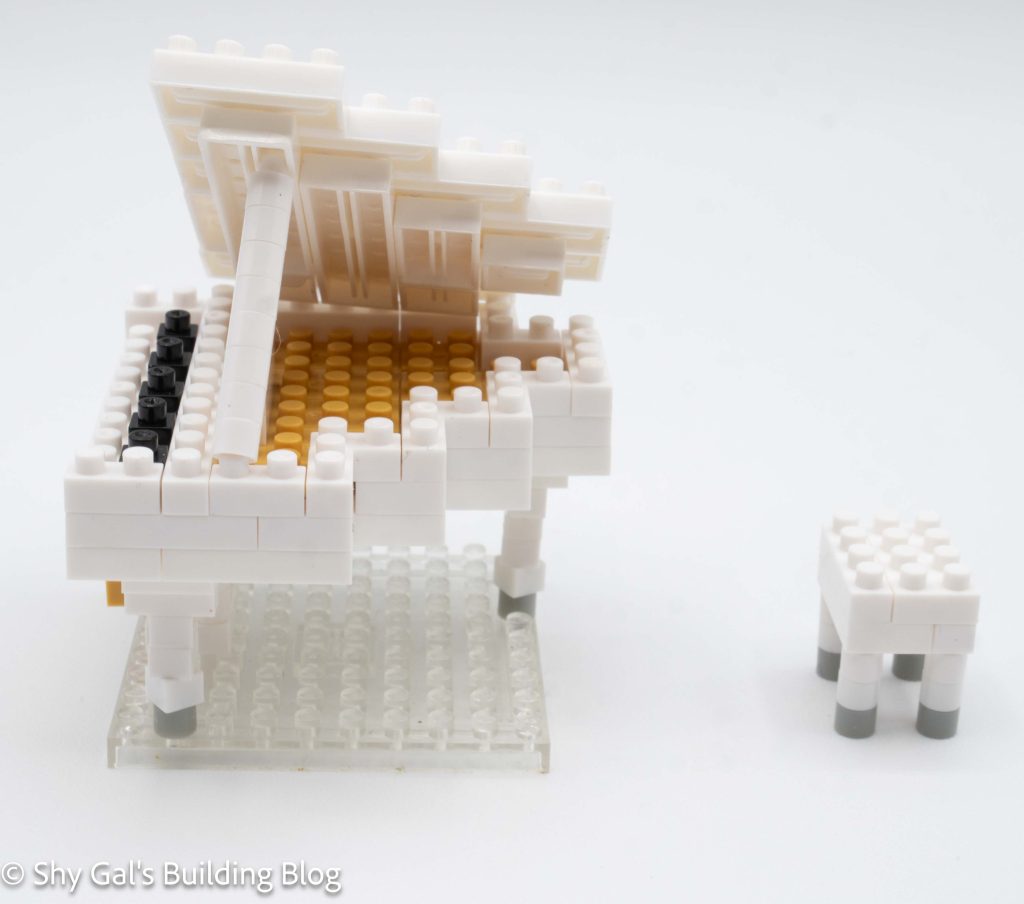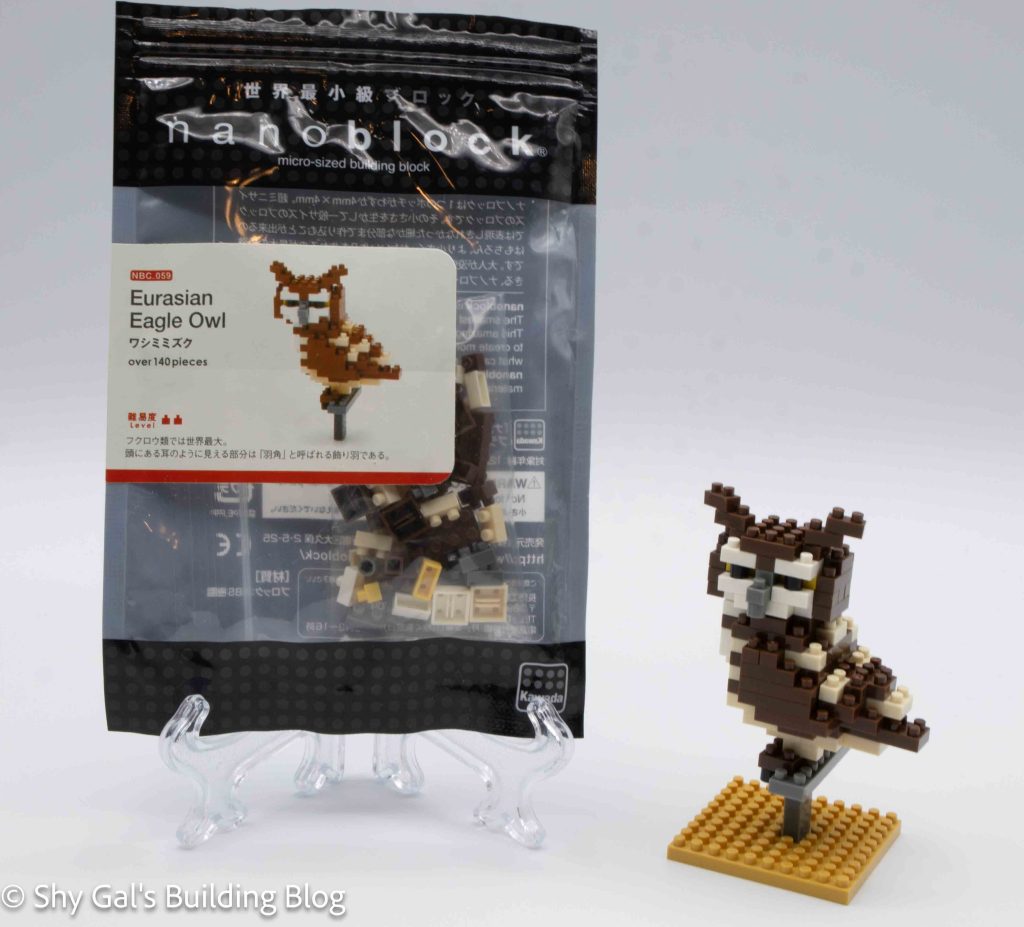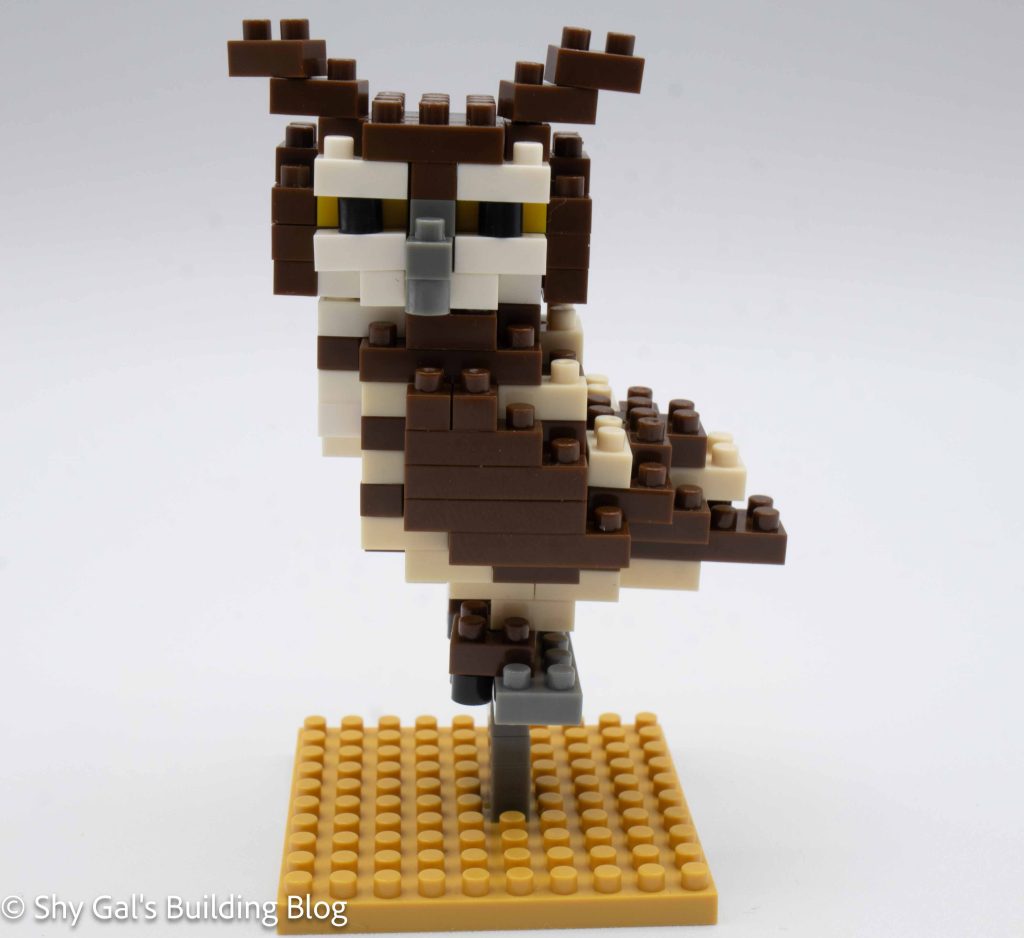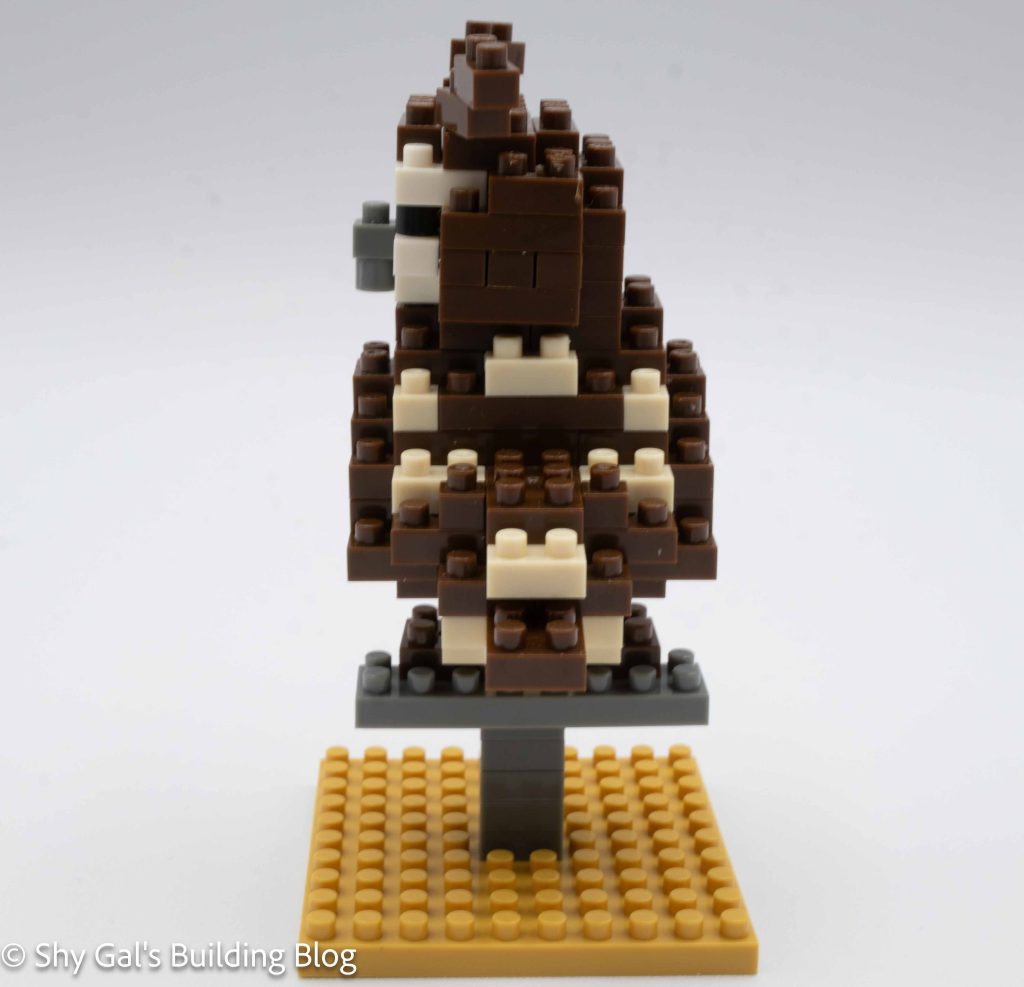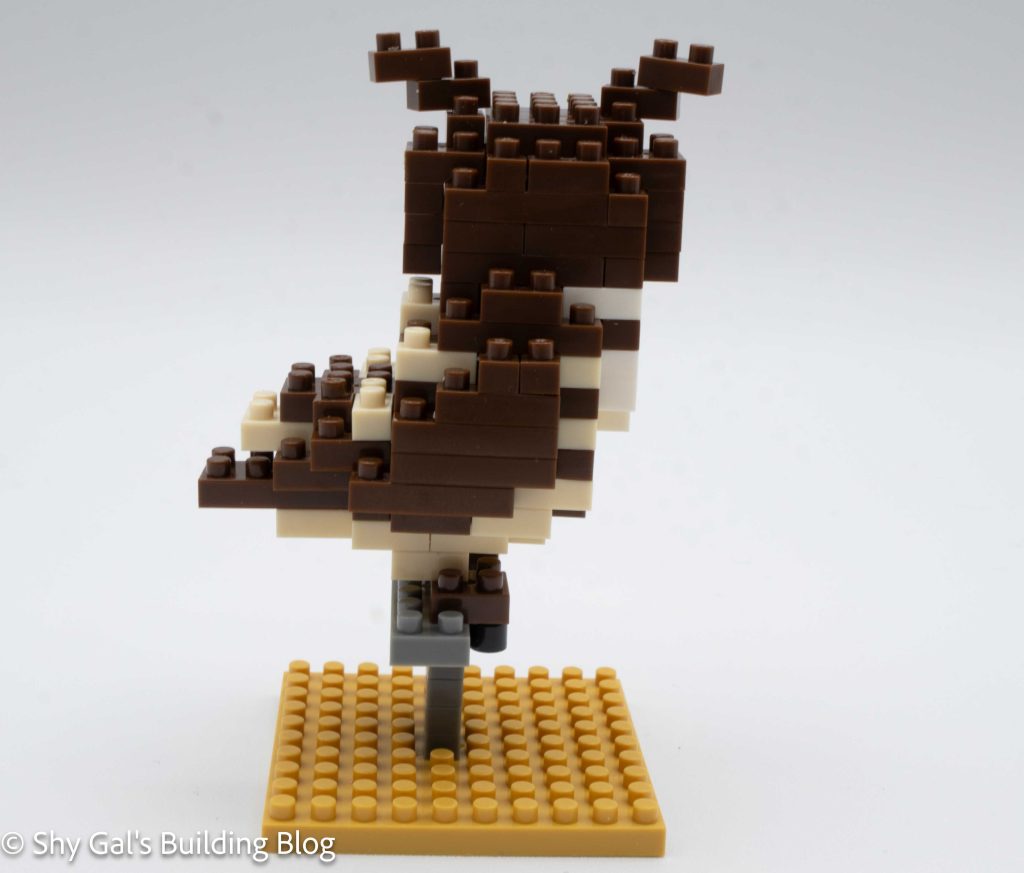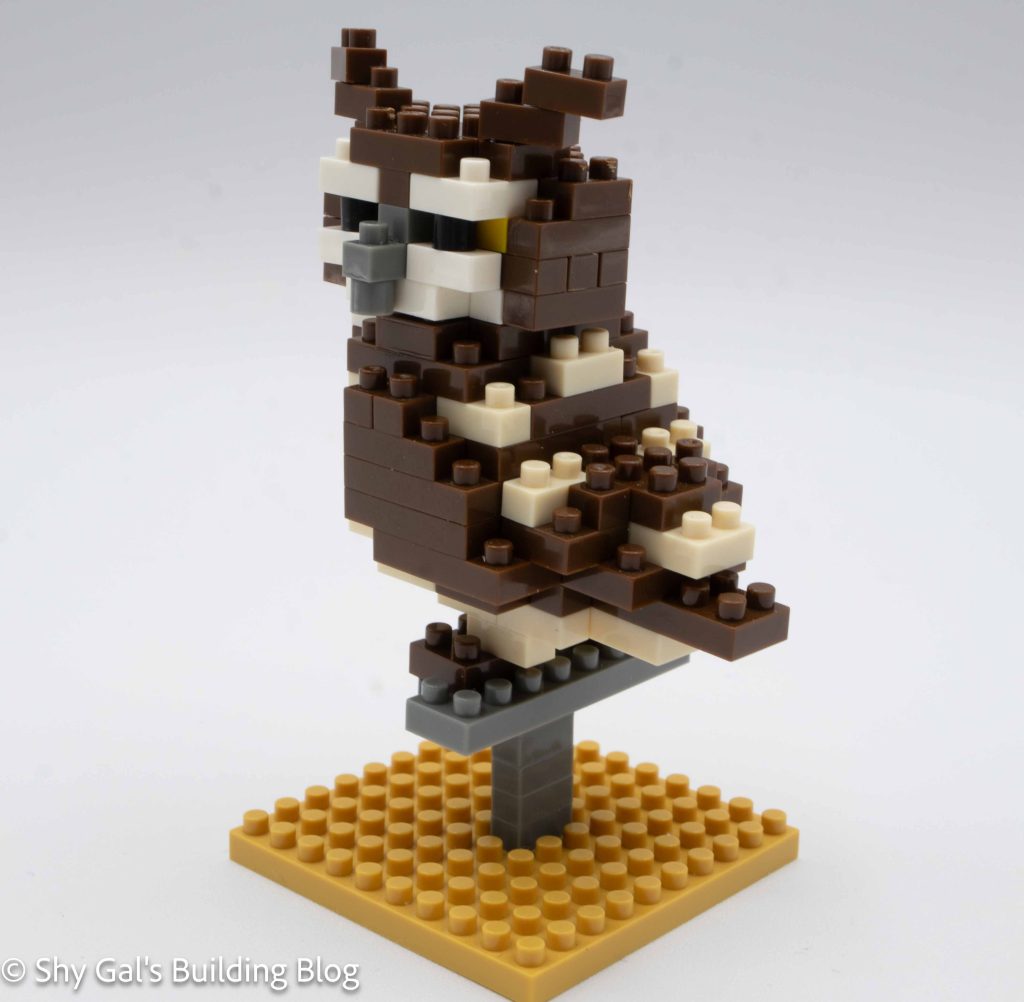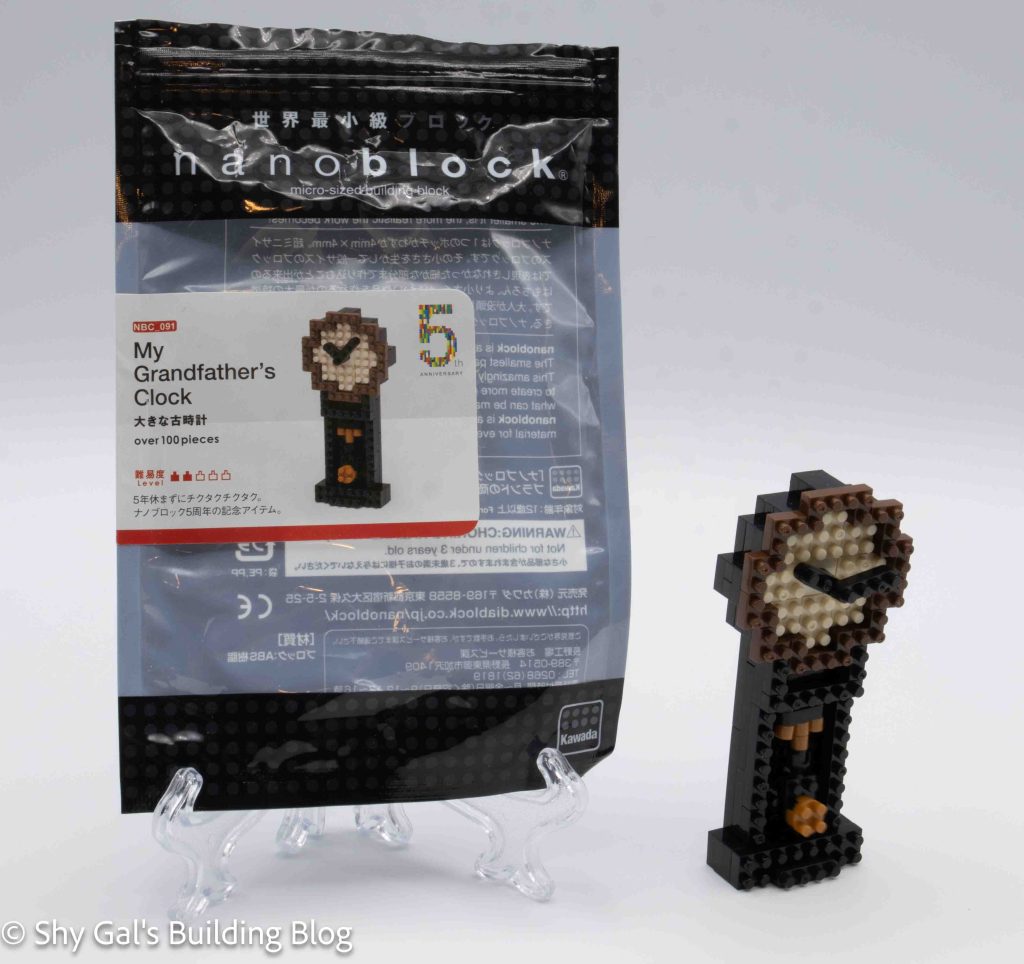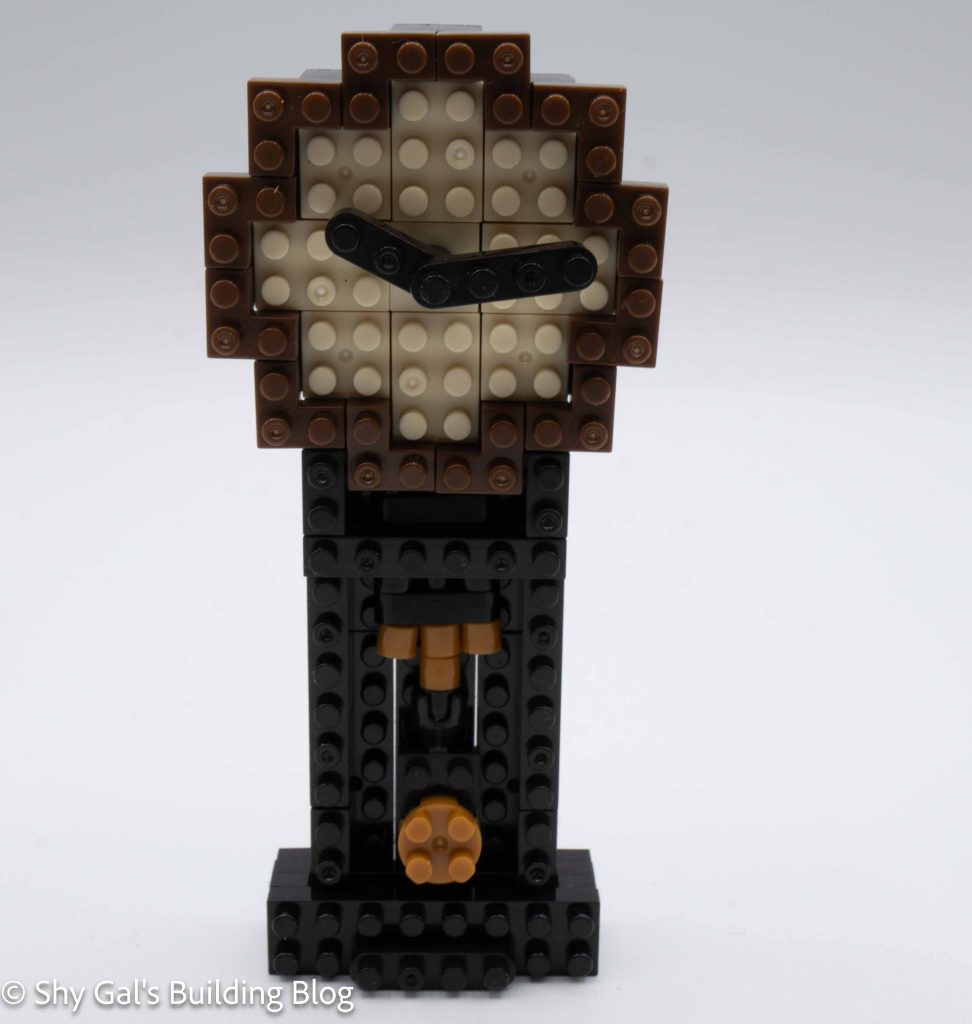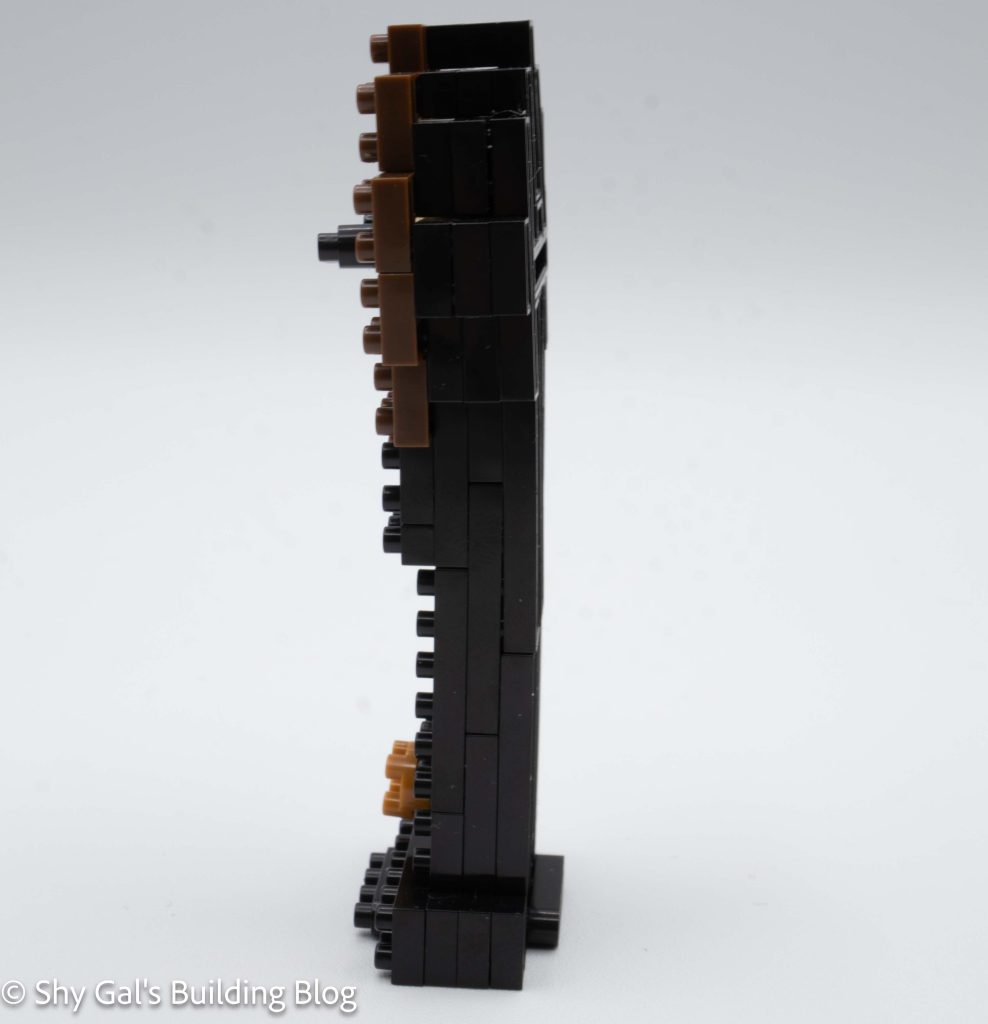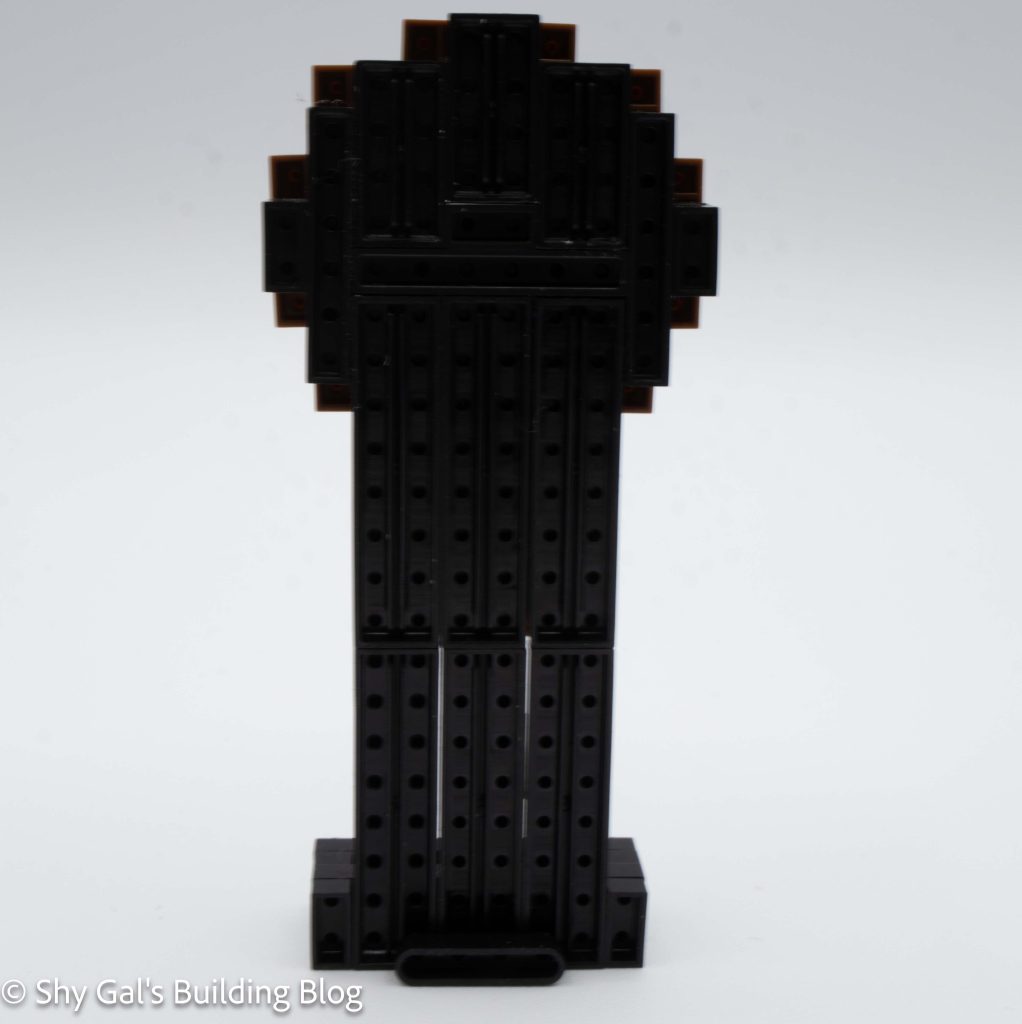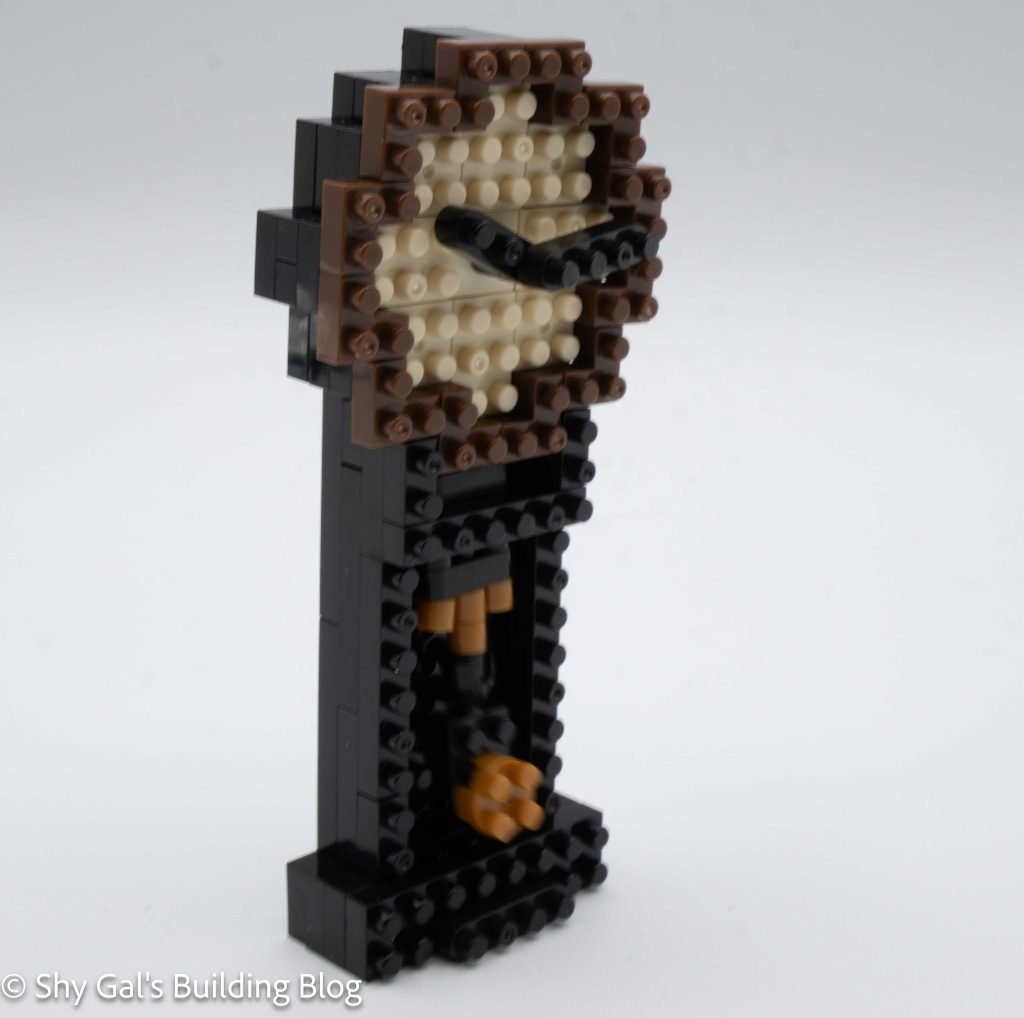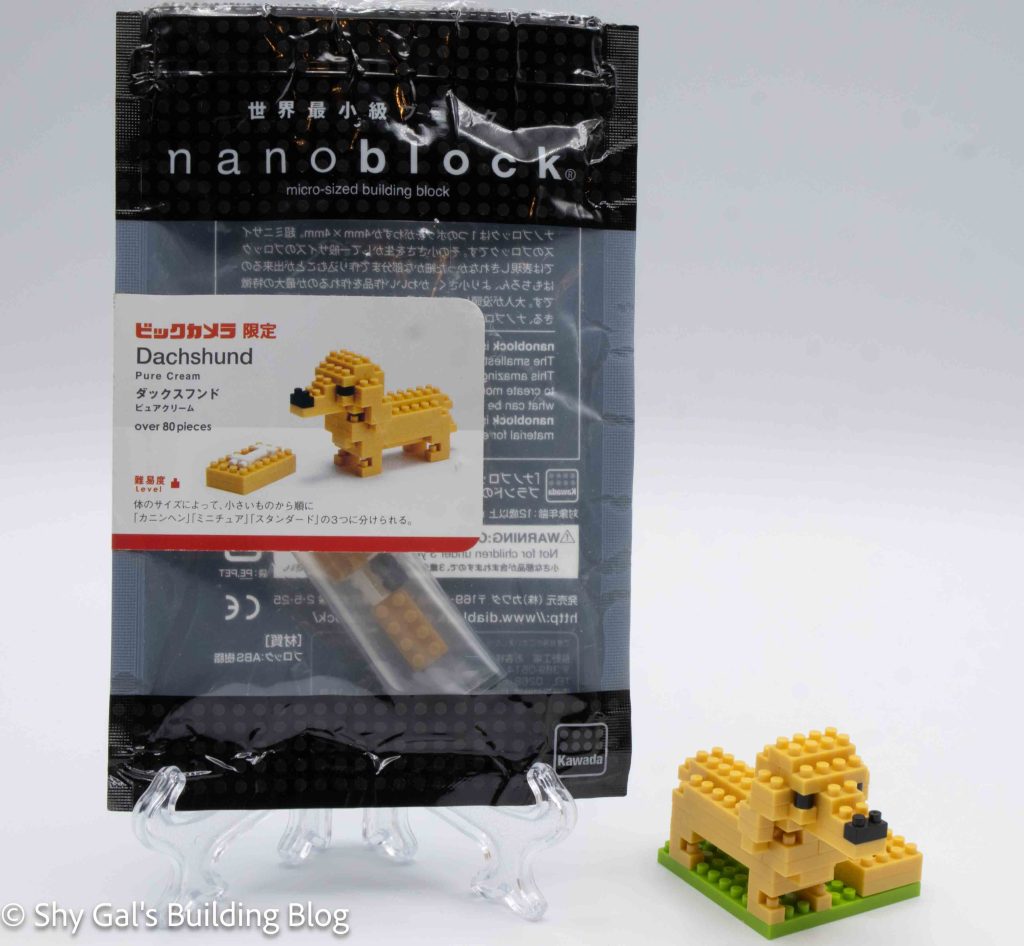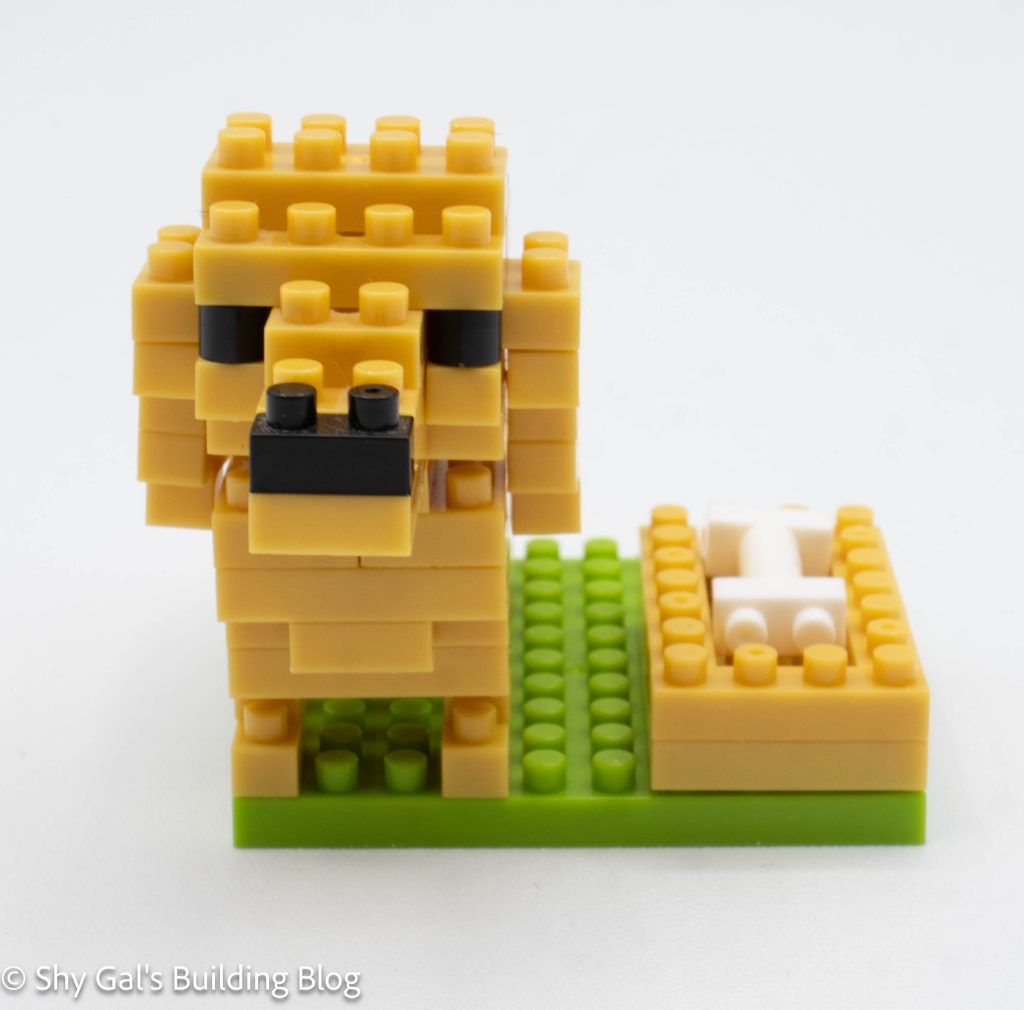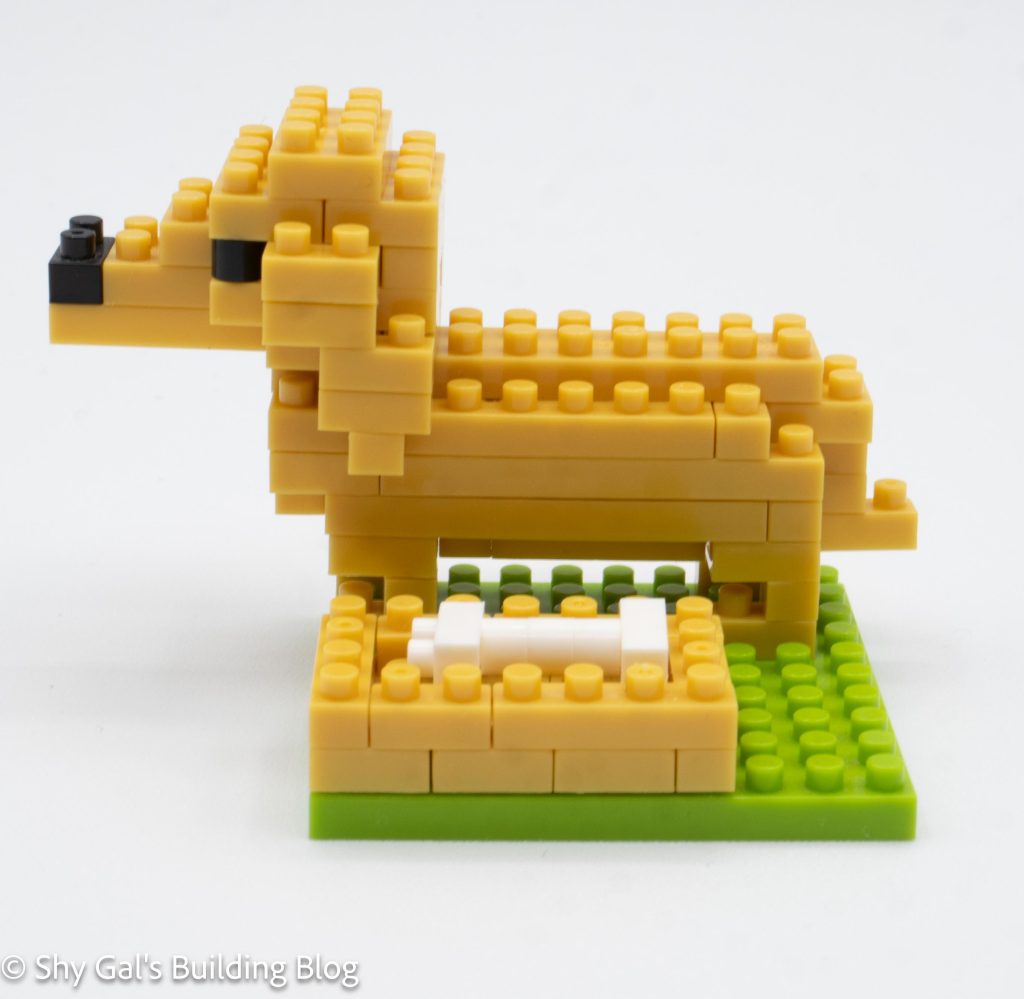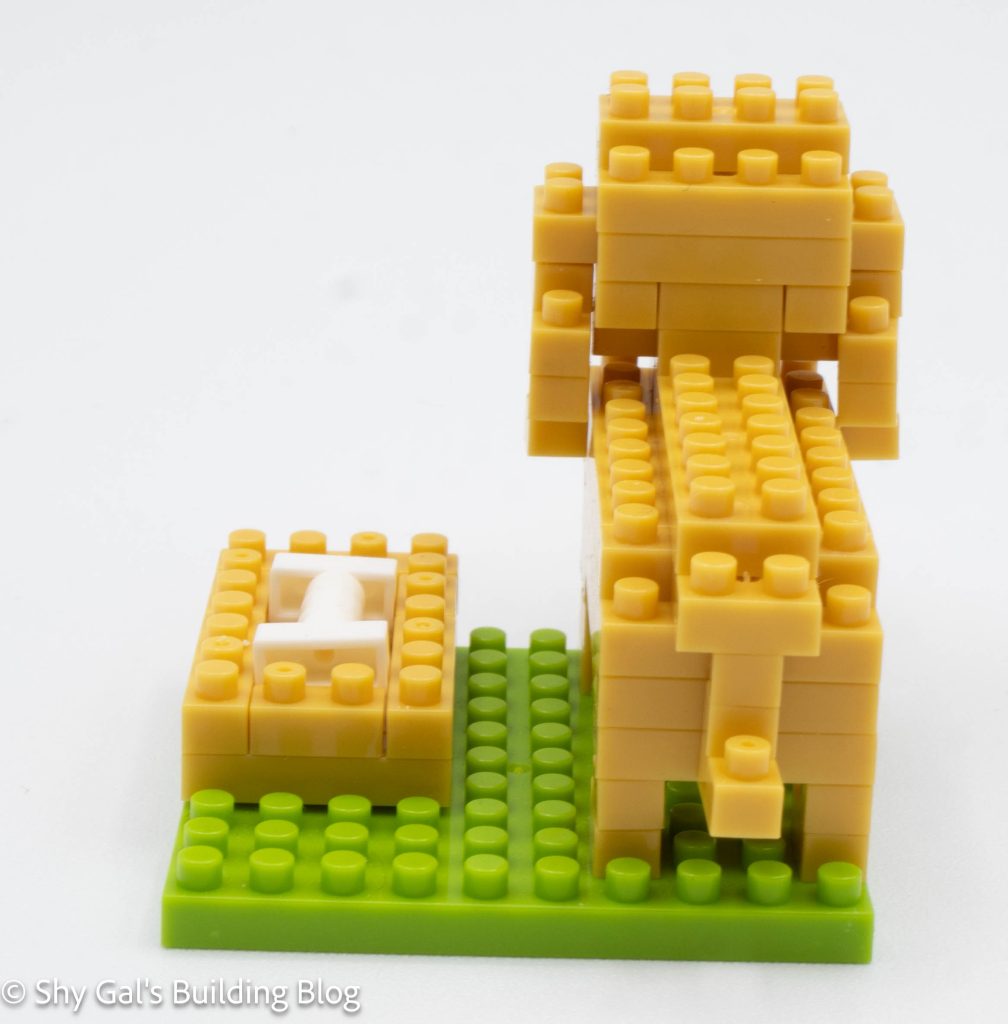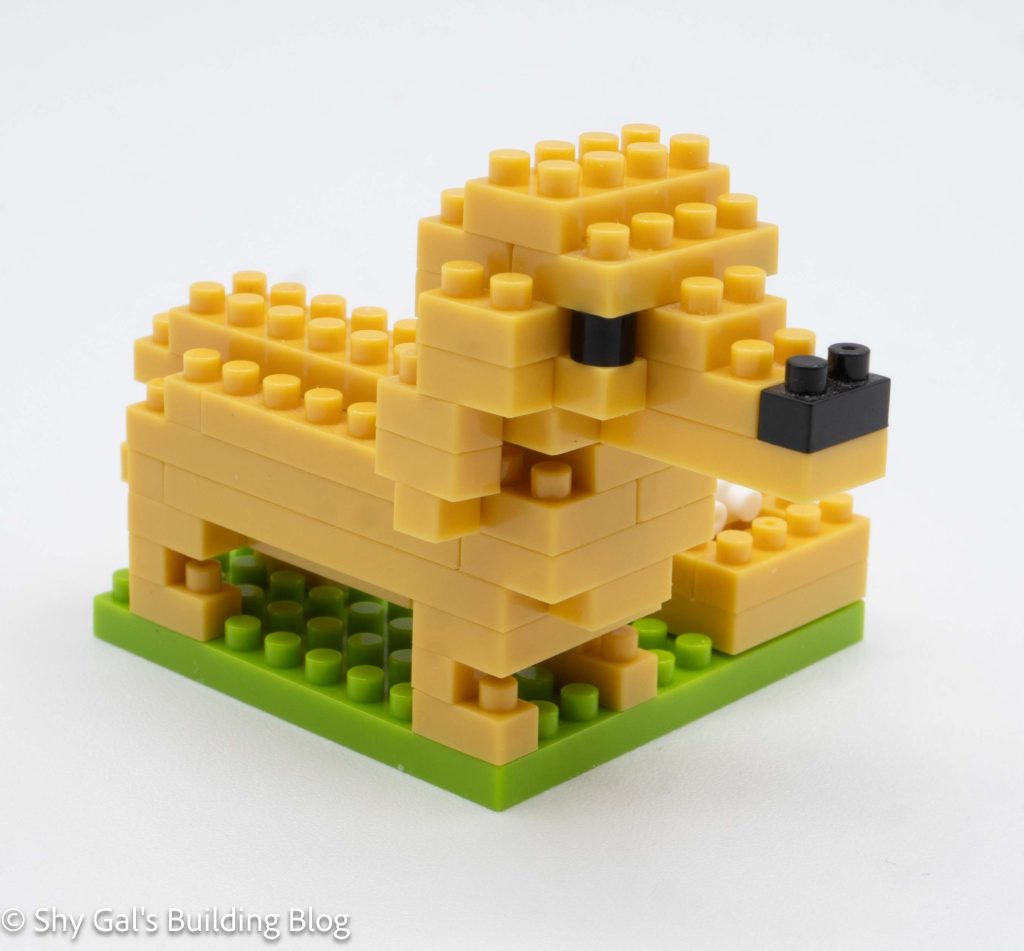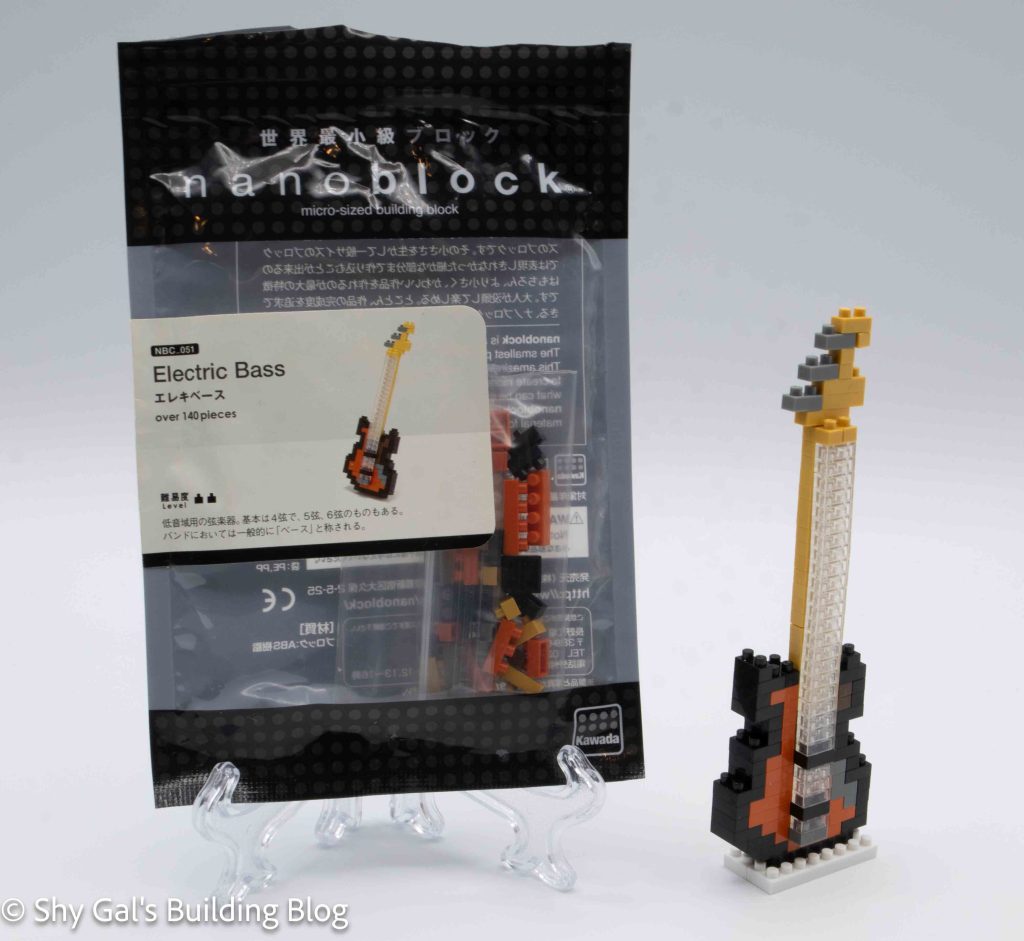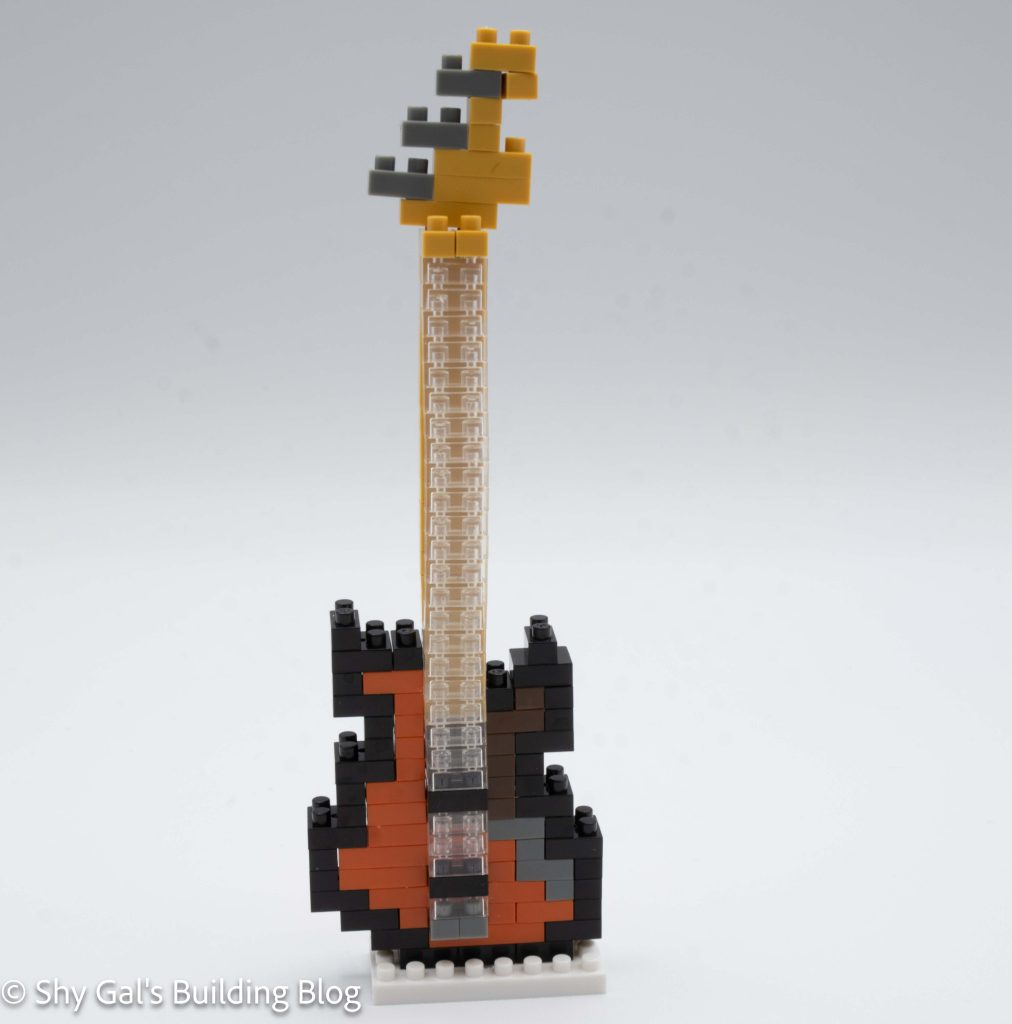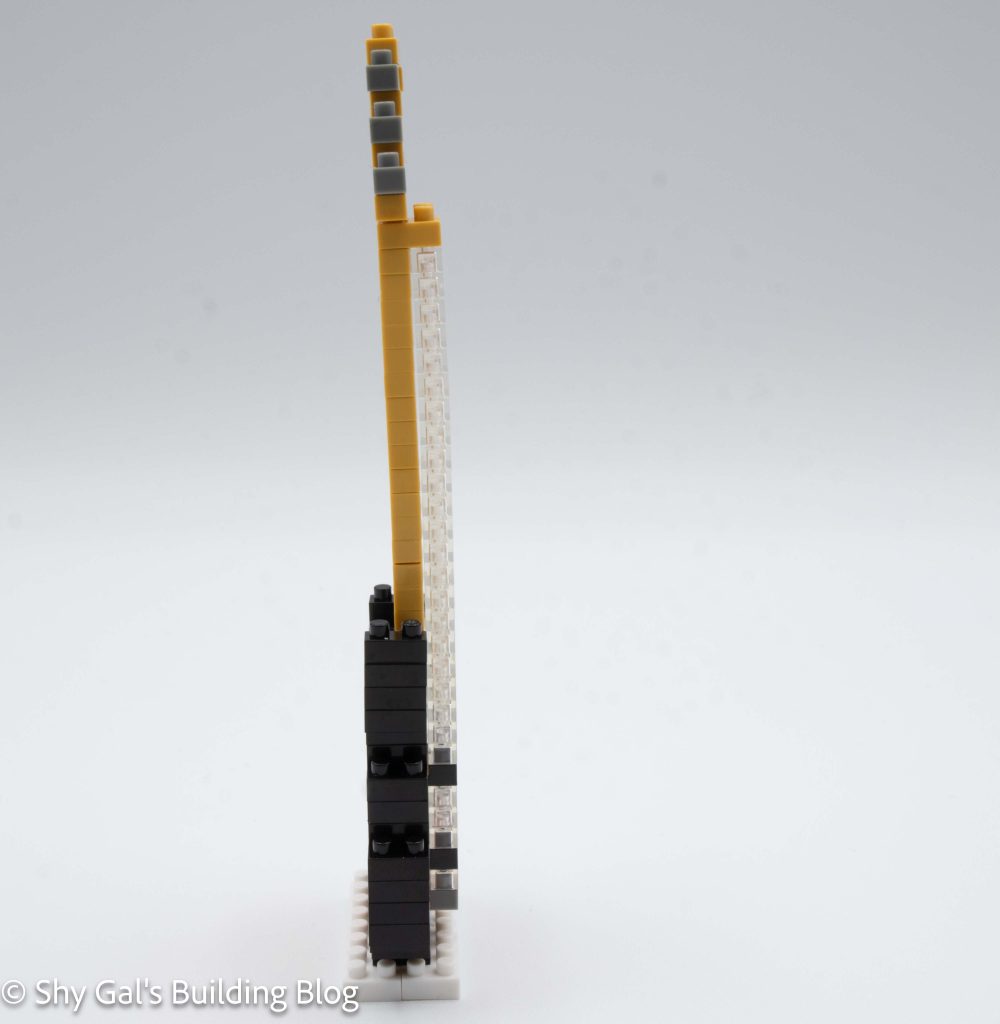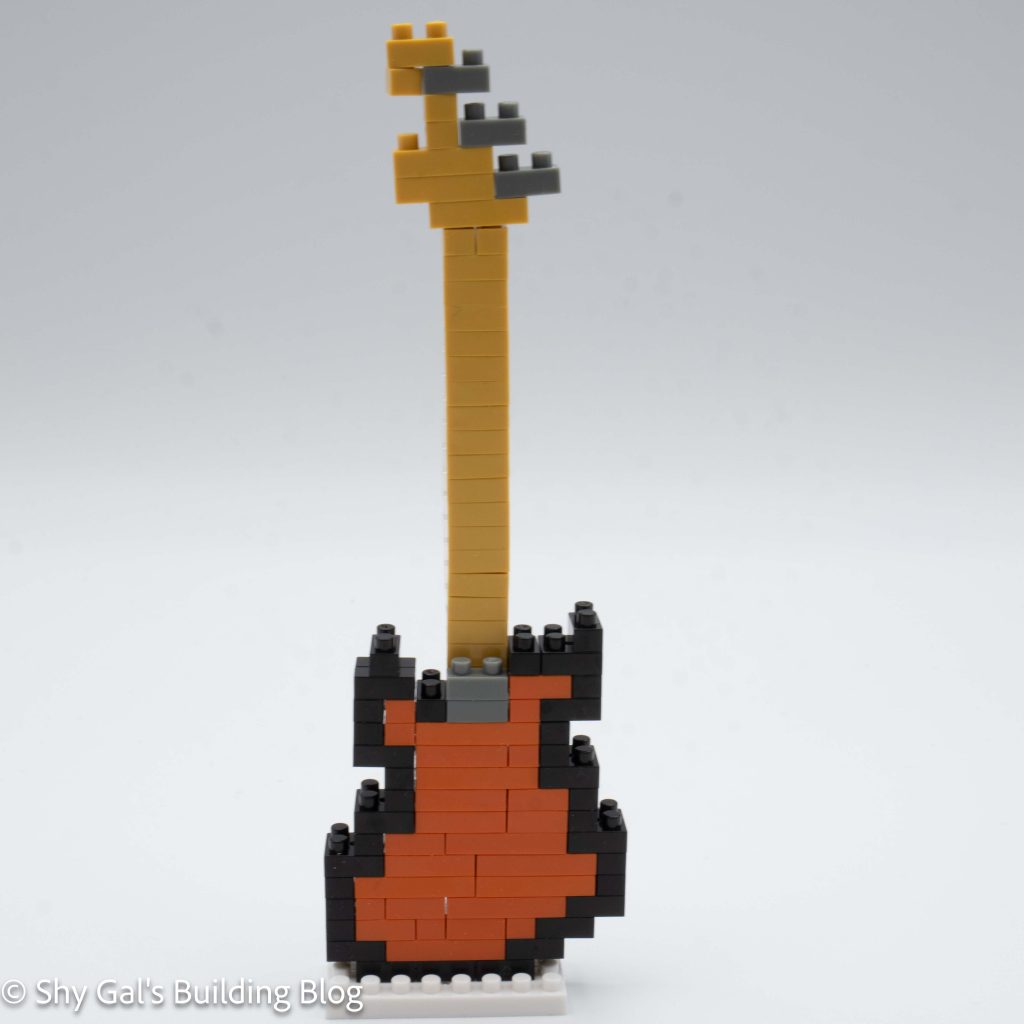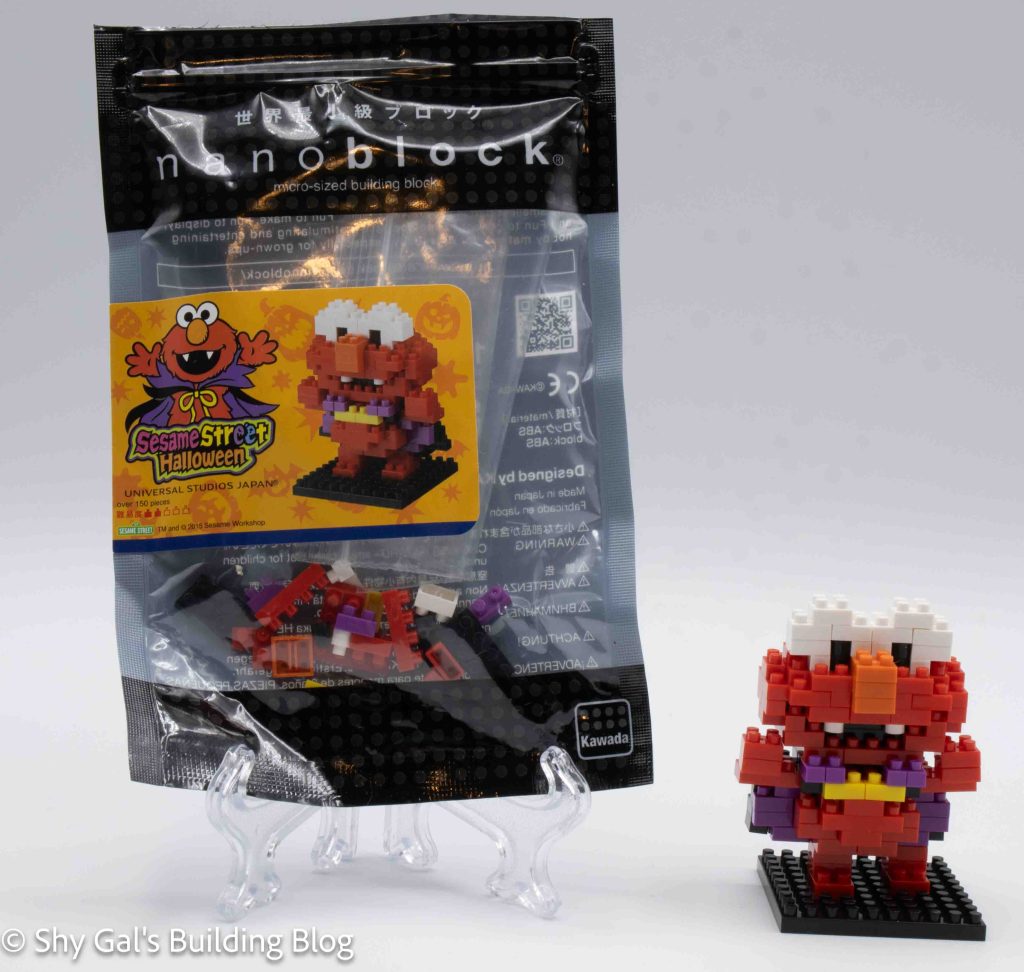
This post is a review of the nanoblock Sesame Street Halloween build. Sesame Street Halloween is part of the nanoblock Universal Studios Japan(USJ) collection. Wondering what else is part of the USJ collection? Click here for a list.
Number of Pieces: 150
Difficulty Rating: 2/5
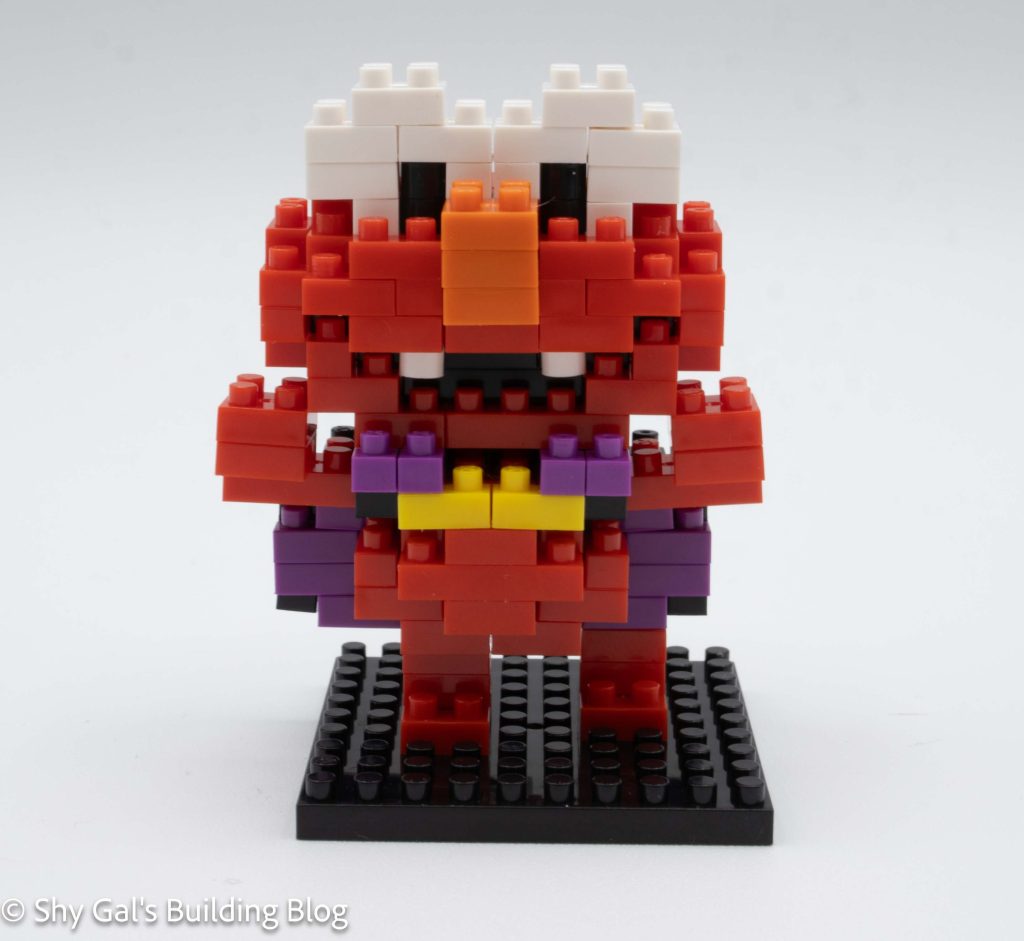
This kit is to build an Elmo dressed up as a vampire.
This build is broken up into 3 sections. They are the head, body, and legs.

The head begins with a base layer of red bricks. I laid the bricks out on the nanoblock pad. The head goes up in layers. It is fairly straightforward.
The body creates Elmo’s body and the cape he is wearing. There is a large base layer of bricks. I was able to lay the layer out on my nanoblock pad.
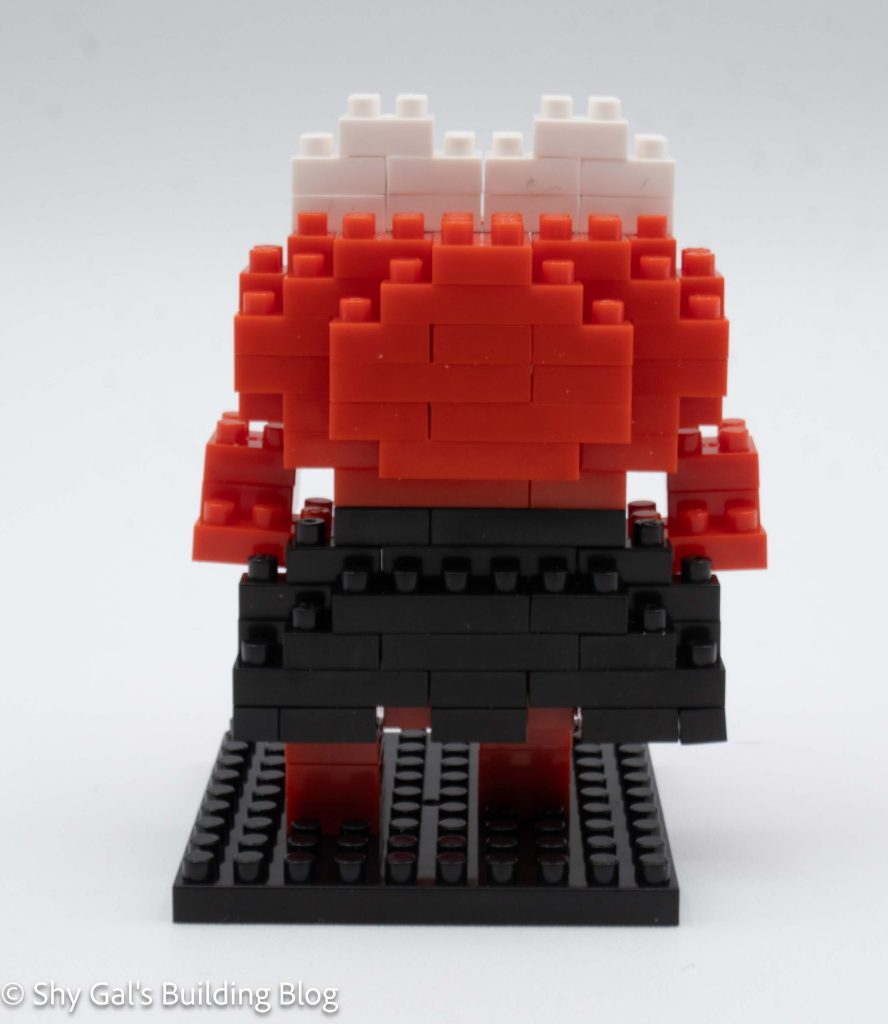
The body then goes up in layers. It is a bit tricky to keep track of where each brick goes because the layer is so large.
After building up the body, additional details are added to the bottom of the cape.
The legs are very straightforward. They are simply placing the bricks on the base with the legs attached. The feet are staggered, so it looks like Elmo is walking.
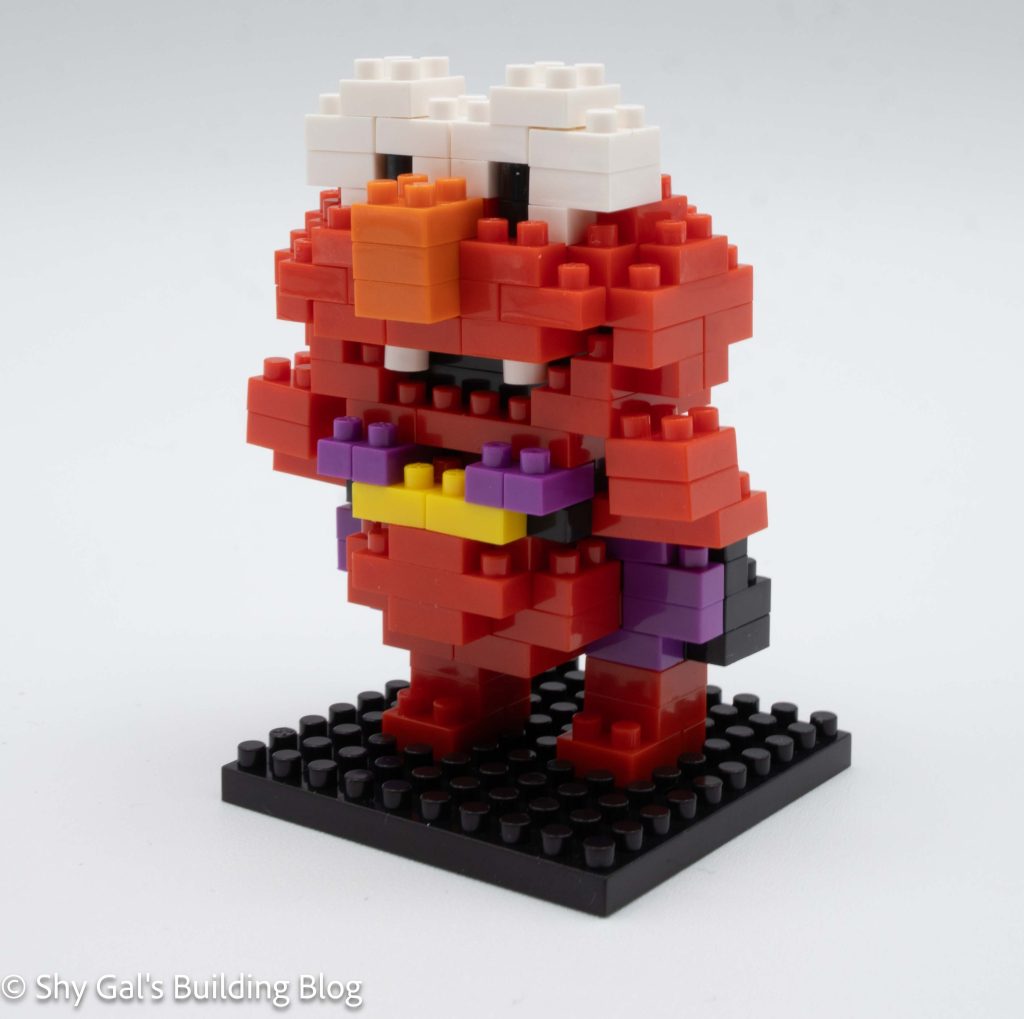
The final step is to connect the 3 sections. The directions are confusing as to how exactly to connect the sections.
Things I liked:
- I really like that Elmo is walking and is in action instead of being static
Things I didn’t like:
- I didn’t like trying to get the 3 sections to line up when completing the build
